Variation of Pecos River Style Antlered Anthropomorphs
Over the course of the Alexandria Project one of our primary objectives is to identify repeated rock art attributes, figures, and/or motifs. As we explained in the Iconographic Inventory blog, we are recording a limited number of rock art attributes at each site we visit. Of the 30-plus attributes we collect information on, perhaps the attribute that gets the Shumla Research Team the most excited are anthropomorphic figures with antler-rack headdresses.
Antlered Anthropomorphs
Variation of Antlered Anthropomorphs
Black Dots and Black Tips
Early during Carolyn’s dissertation research she noticed the unnatural attribute of dots painted on the end of antler tines. Interestingly, we have identified some figures that have black antler tips rather than black dots. We suspect that the black dots and tips share the same symbolism, but it is interesting we are observing two different methods for portraying these unique antlers.
Curved Versus Straight Antlers
The main beams of most antler-rack headdress we have documented are curved; however, we have now observed at least two examples of straight main beams. Interestingly, each of the straight main beam examples are located at sites along the Devils River.
Double Antler Racks
We have documented two figures with double antler racks. Carolyn argues in her new book that the figure with the double antler rack at White Shaman represents a specific deity, and we are excited to begin comparing the attributes between the two figures.
Antlered Anthropomorphs Associated with Other World Journey Motifs
Many of the antlered anthropomorphs we have documented thus far are associated with Other World Journey motifs, or OWJ. OWJs consist of an anthropomorph “passing through” a portal. The portals can take many different shapes, but in each example the anthropomorph is above, below, or within the portal. The two most common representations of portals we have documented are arches or what we call “box with legs.”
Antlered Anthropomorphs with Wings, Upraised Arms, Mask, and “Bear Ears”
One of the surprises we have found is that anthropomorphs with antler-rack headdresses not only share antler attributes, but also share other body characteristics. For instance, we knew about three examples of antlered anthropomorphs with wings from Fate Bell and Raymond’s Shelter. In addition to an antler-rack headdress, each figure has wings, upraised arms, a mask (black or negative circle within the head), and “bear ears” (if you have been following our #motifmonday posts on Facebook these figures will sound familiar). We were very excited to identify another example of this type of figure at a site we recently documented! The newest figure is in very poor condition, but the head shape, antlers, and upraised arms suggest this figure also had wings when it was originally painted.
Continuing Research into Antlered Anthropomorphs
Below are images of of the 18 antlered anthropomorphs in real-color and DStretch enhancement (just click on each image to go between real-color and DStretch). There are many more shared similarities between the antlered figures than can be discussed in this blog, so be sure to check out all 18 antlered anthropomorphs documented thus far to identify shared traits for yourself. Antlers are only one of the attributes we are researching as part of the Alexandria Project. Each new site we document contains new information to help us better decipher the meaning of repeated images, and further contributes to our understanding of Lower Pecos rock art.
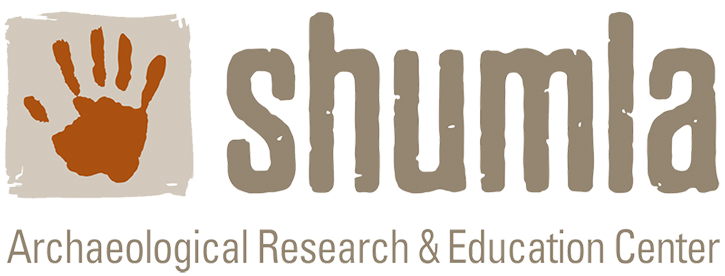
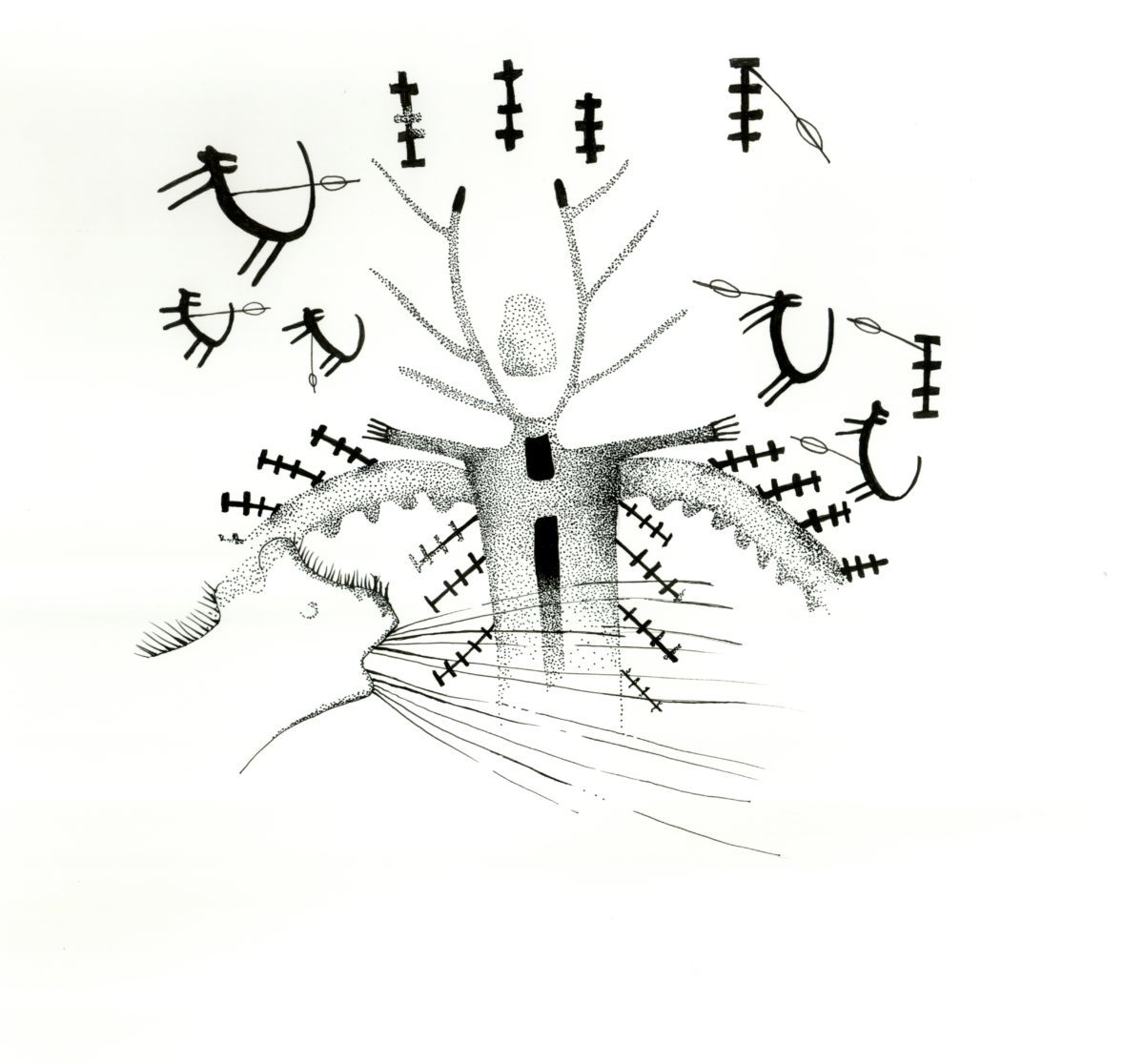
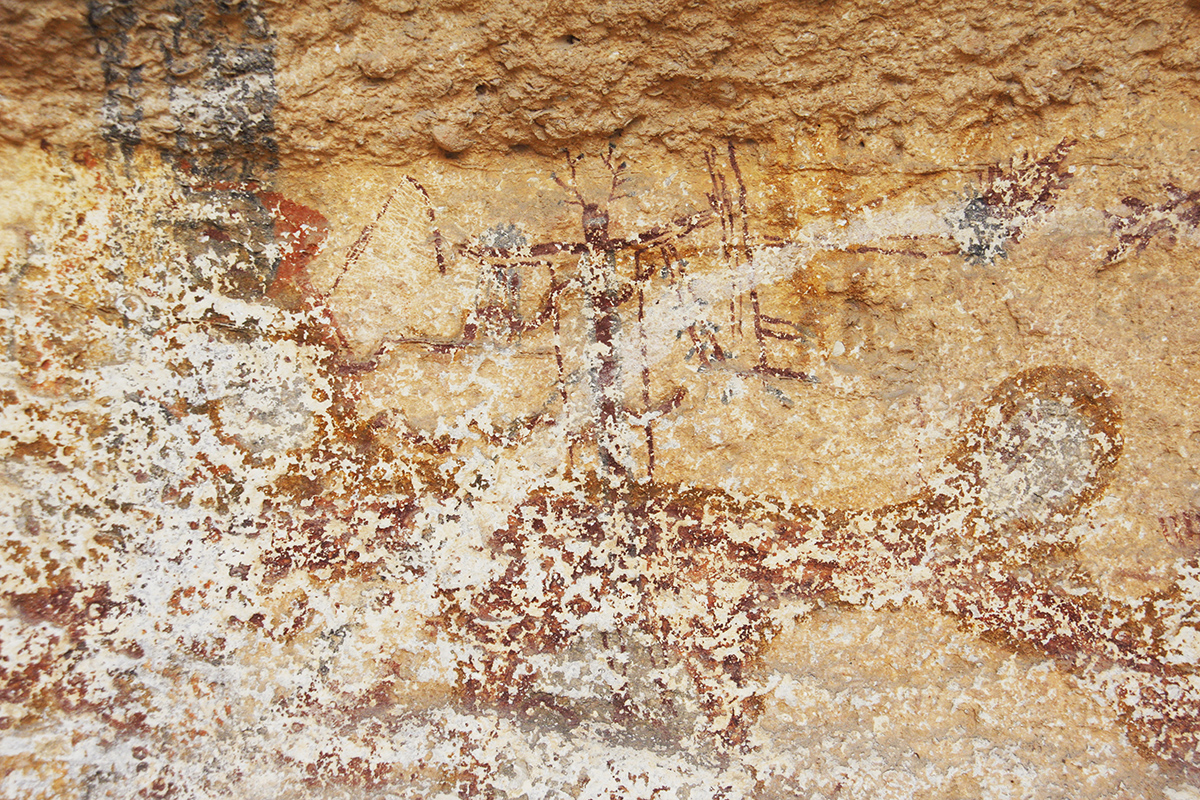
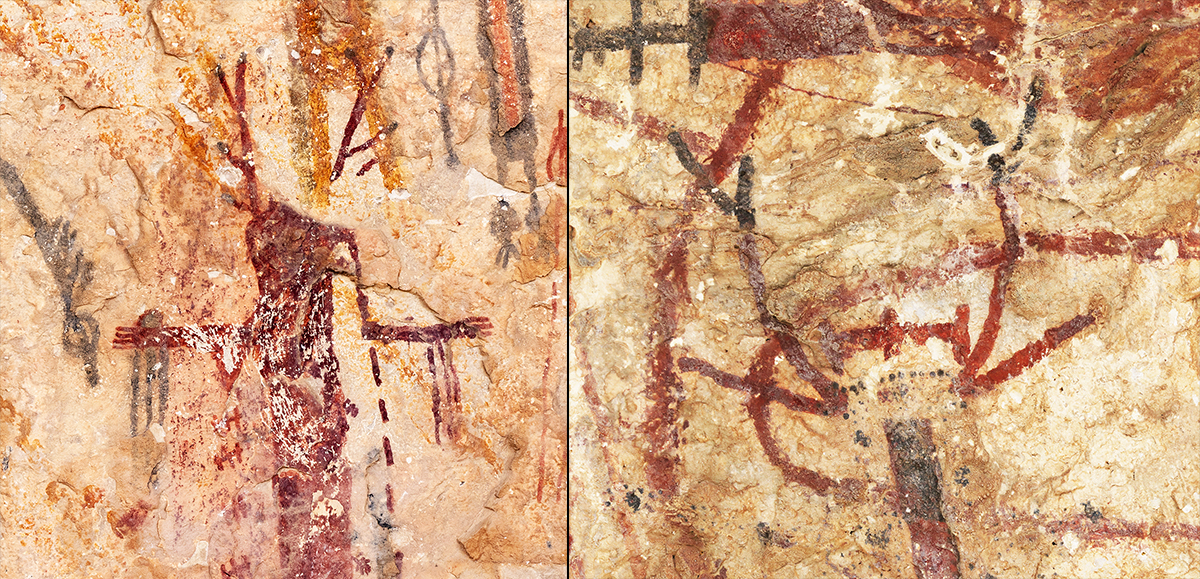
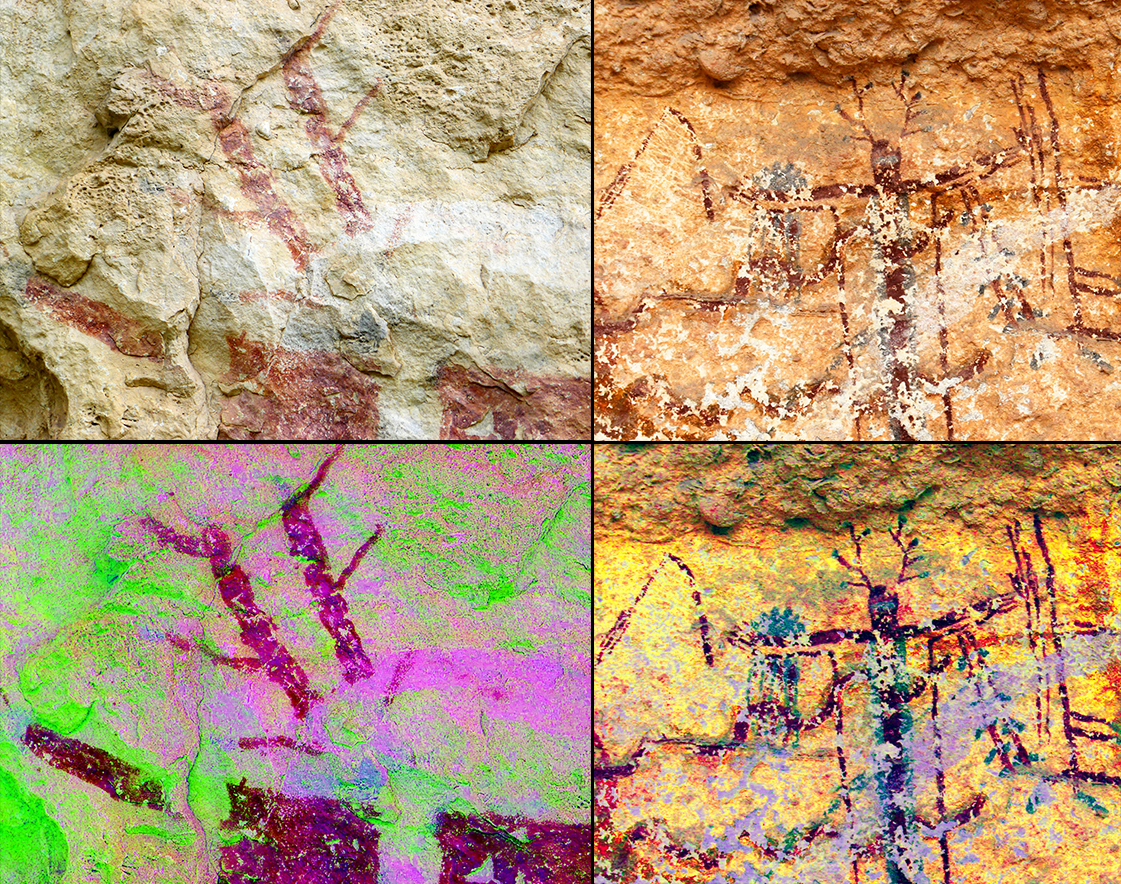
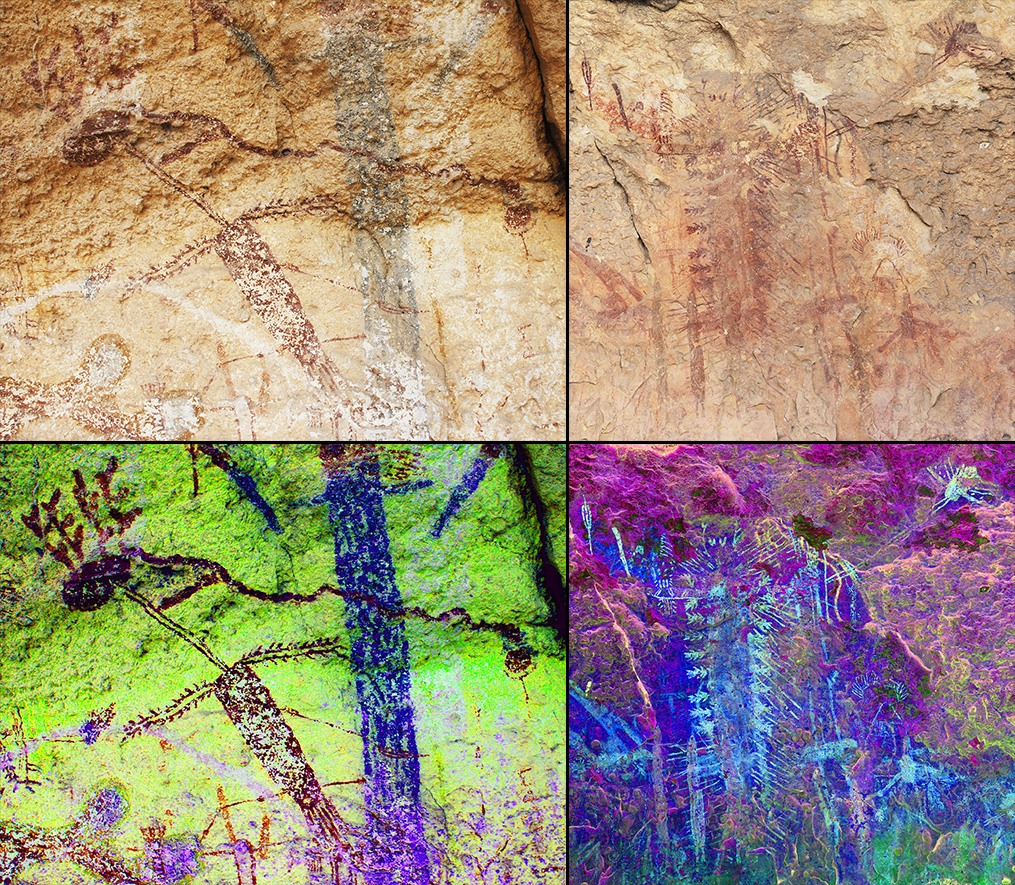
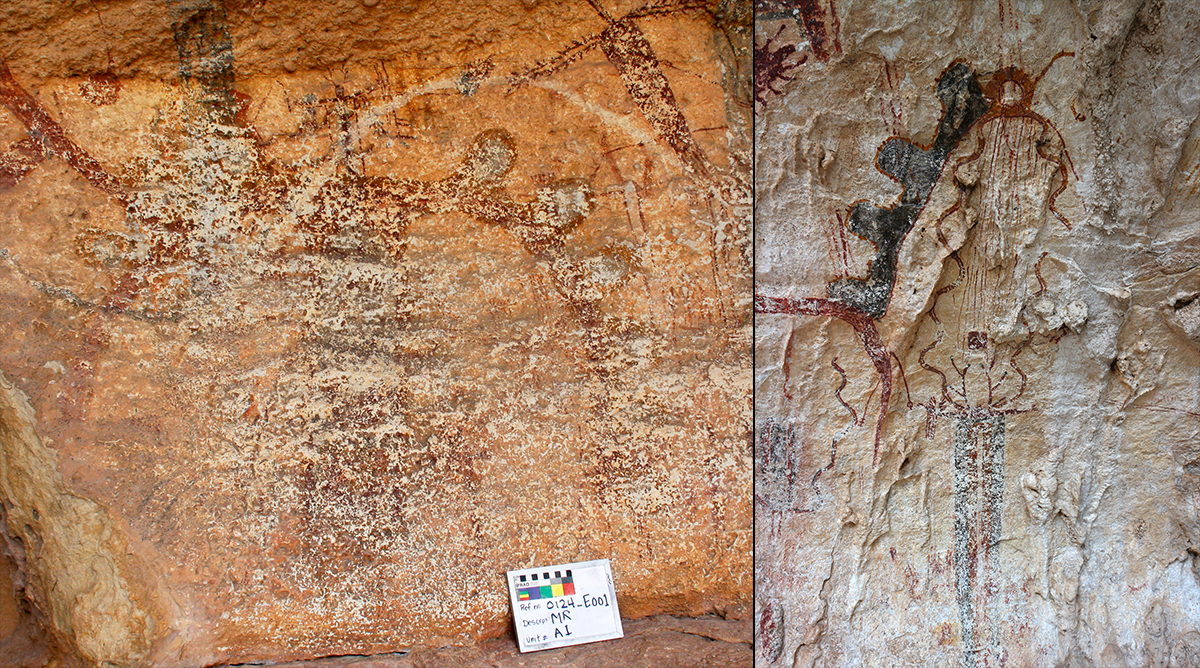
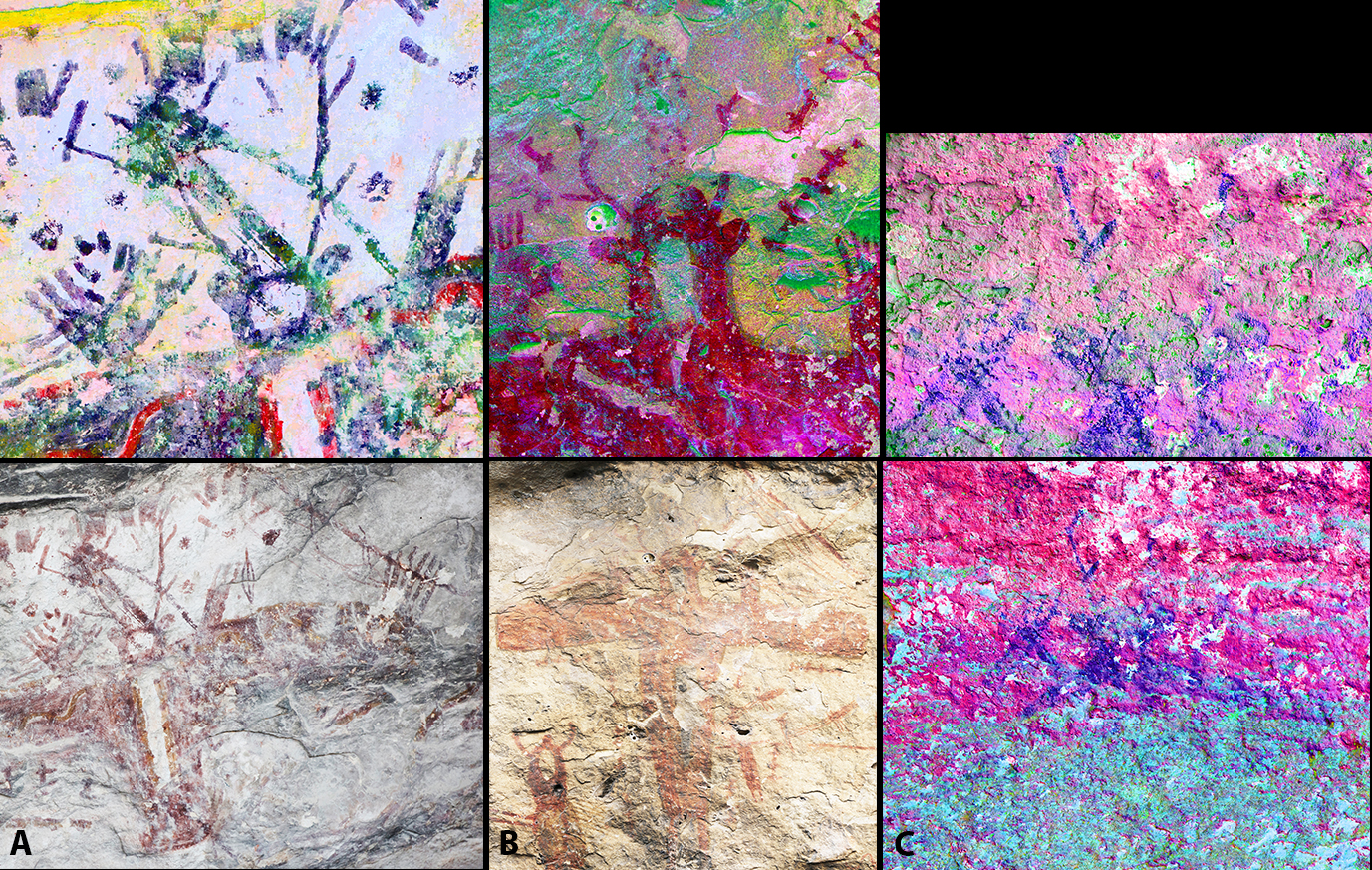
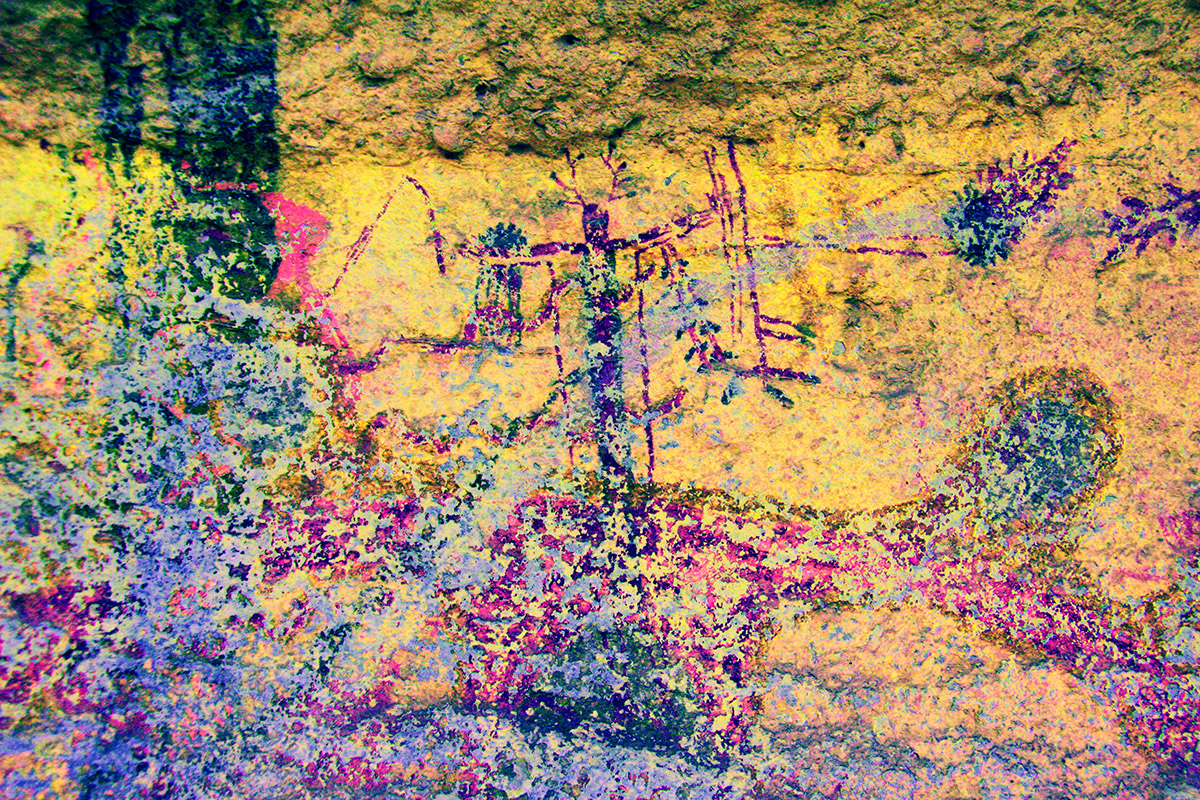
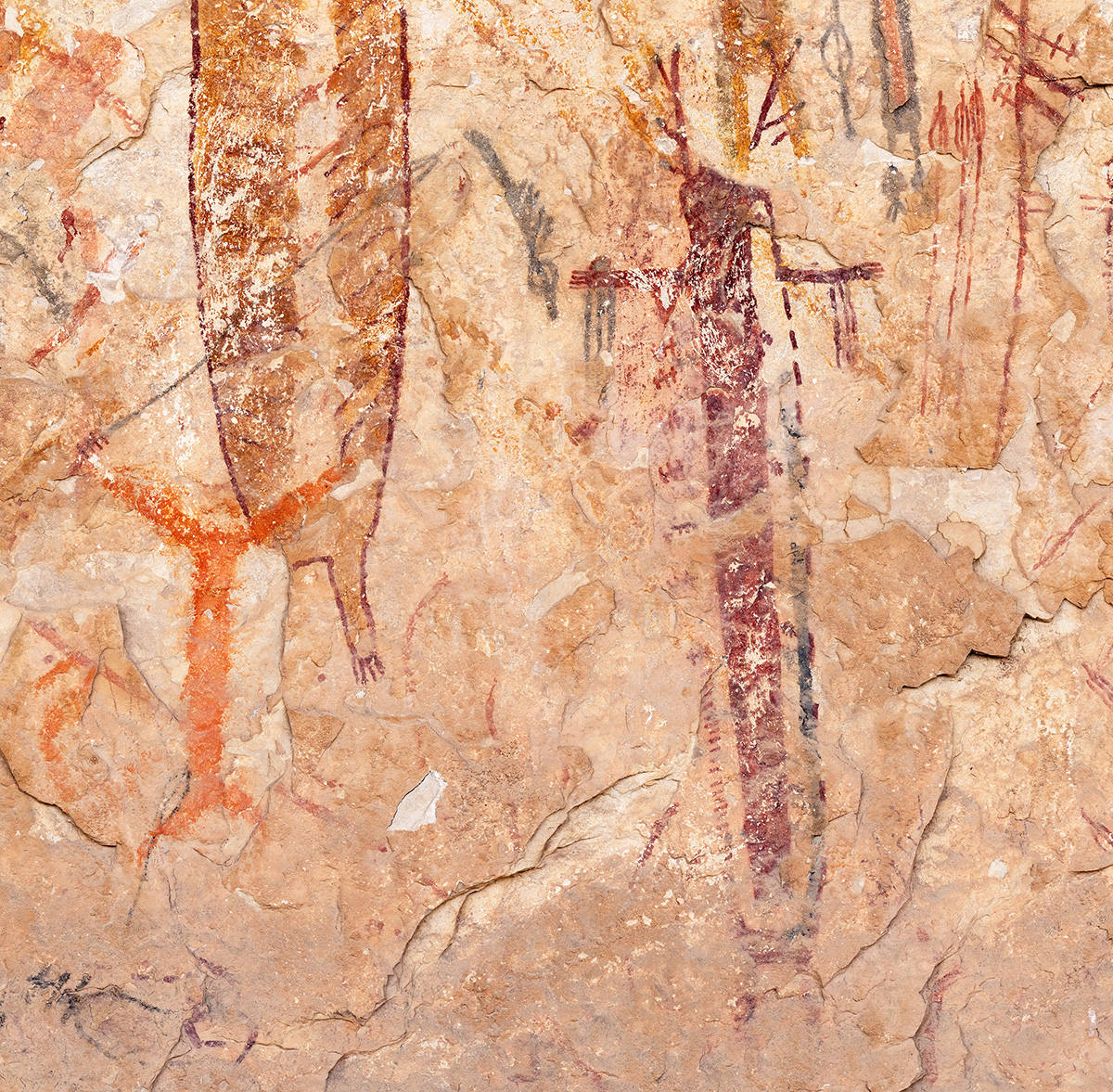
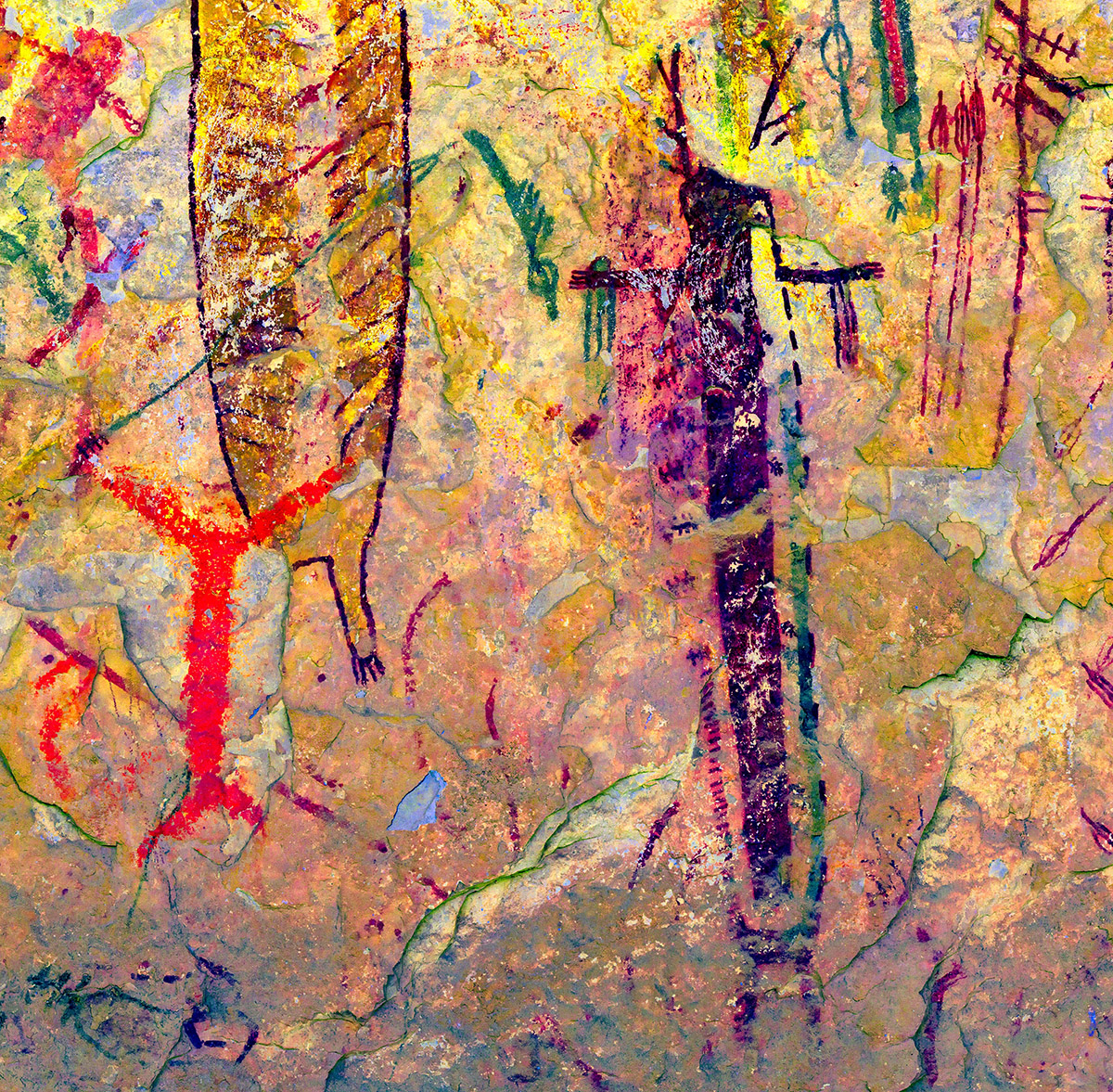
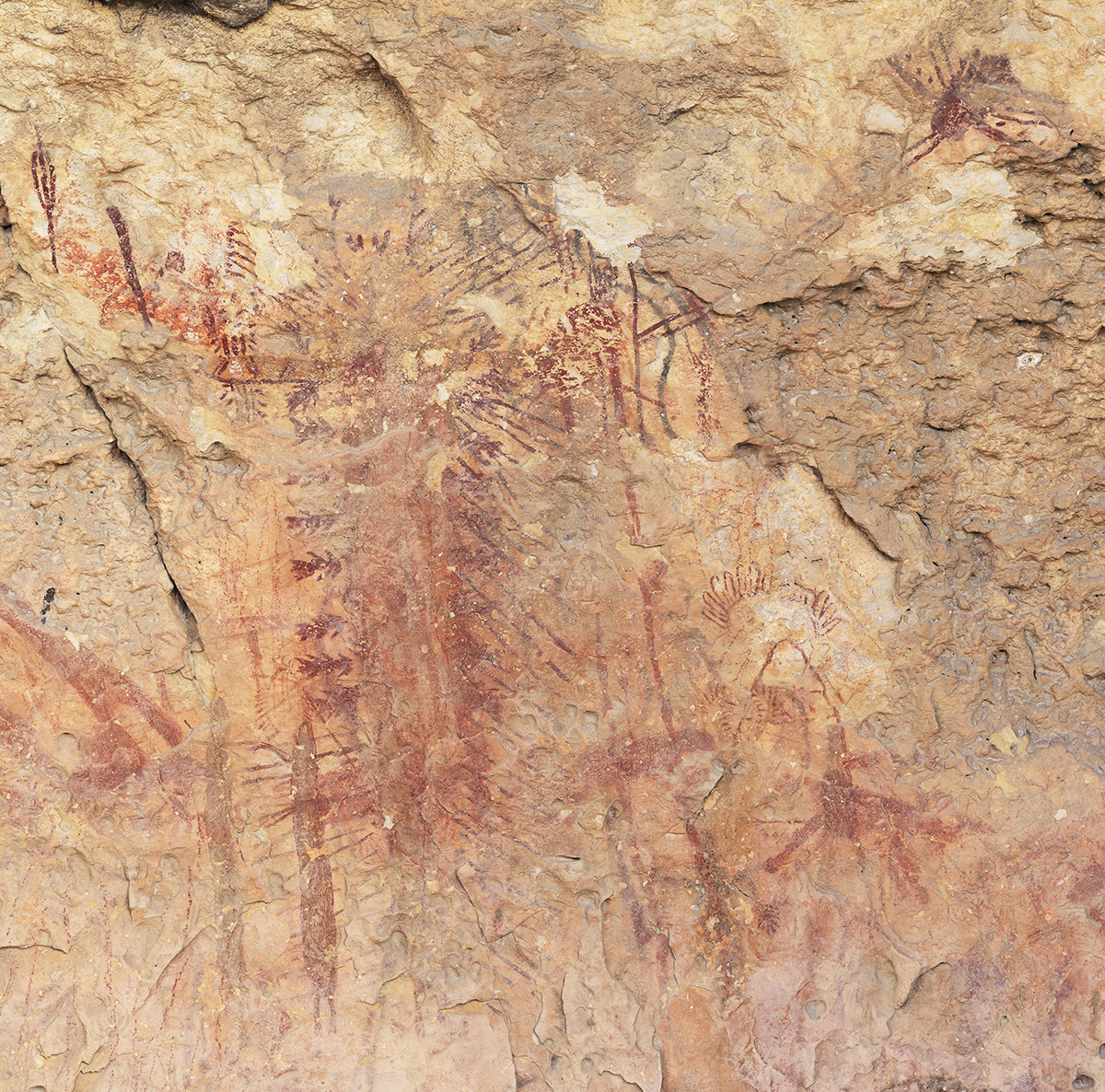

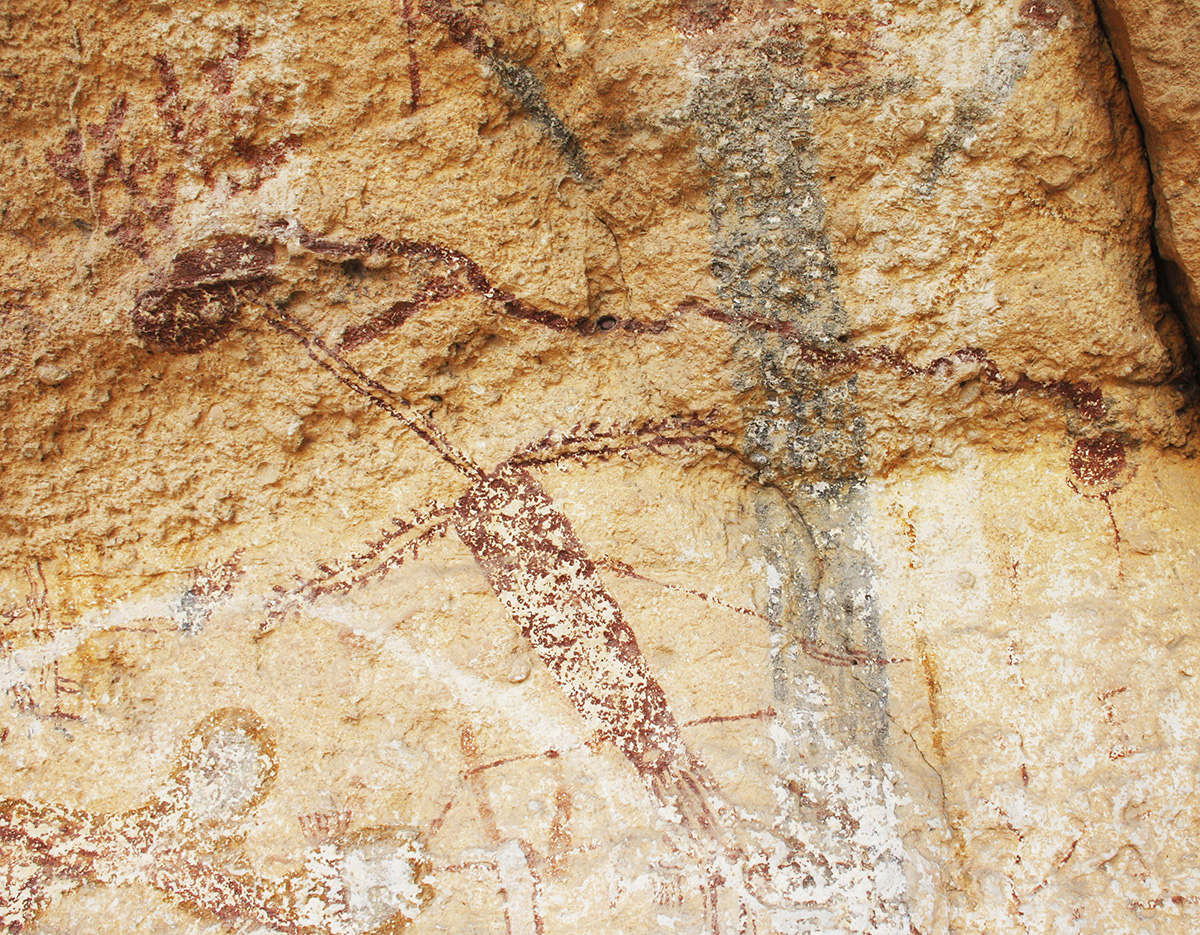
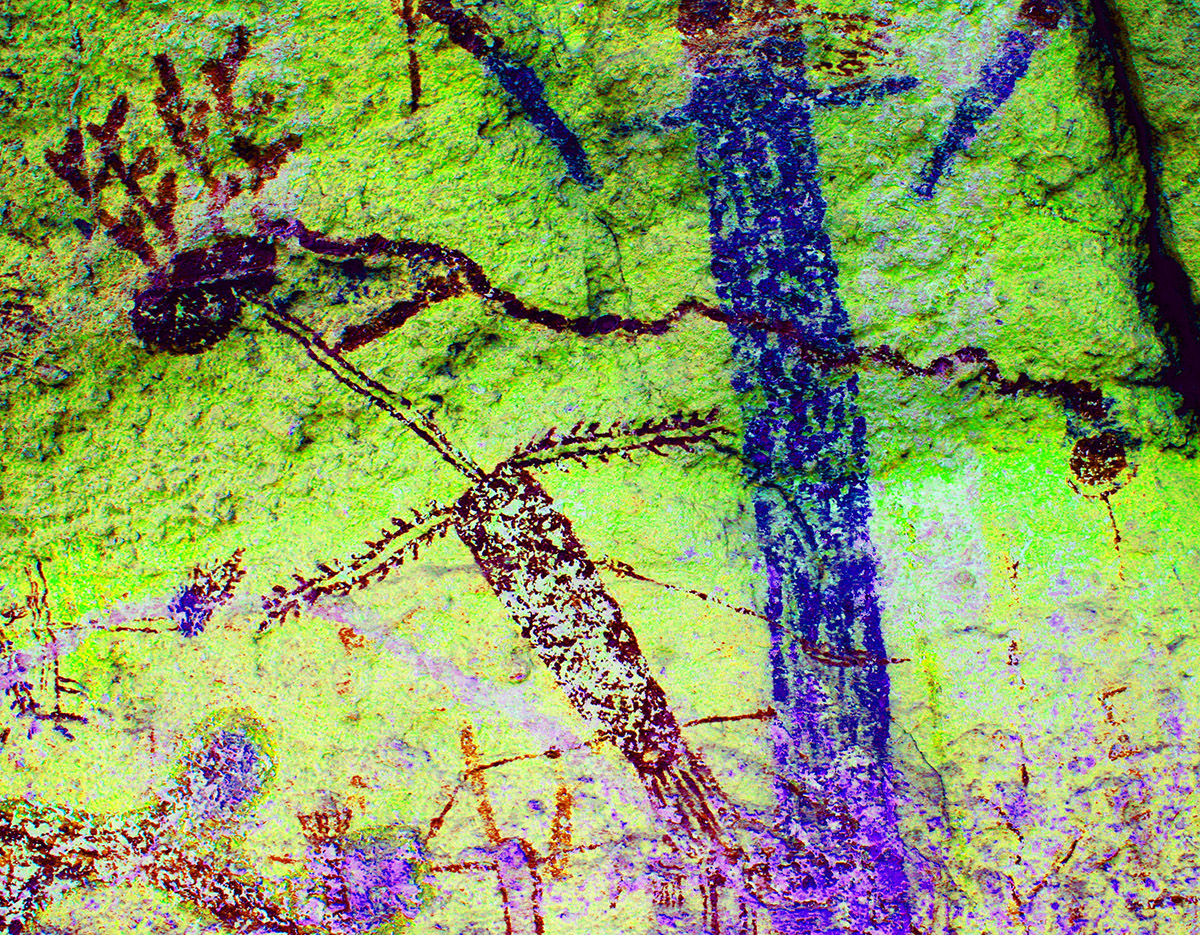

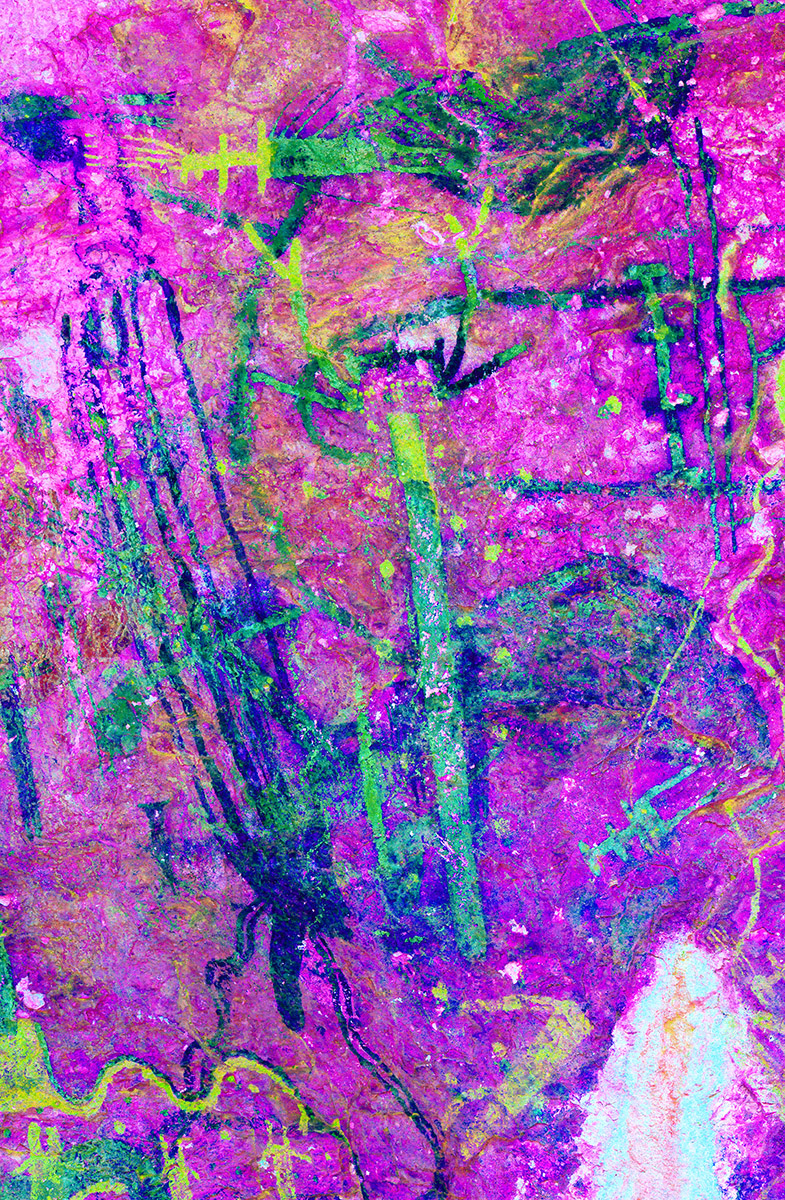
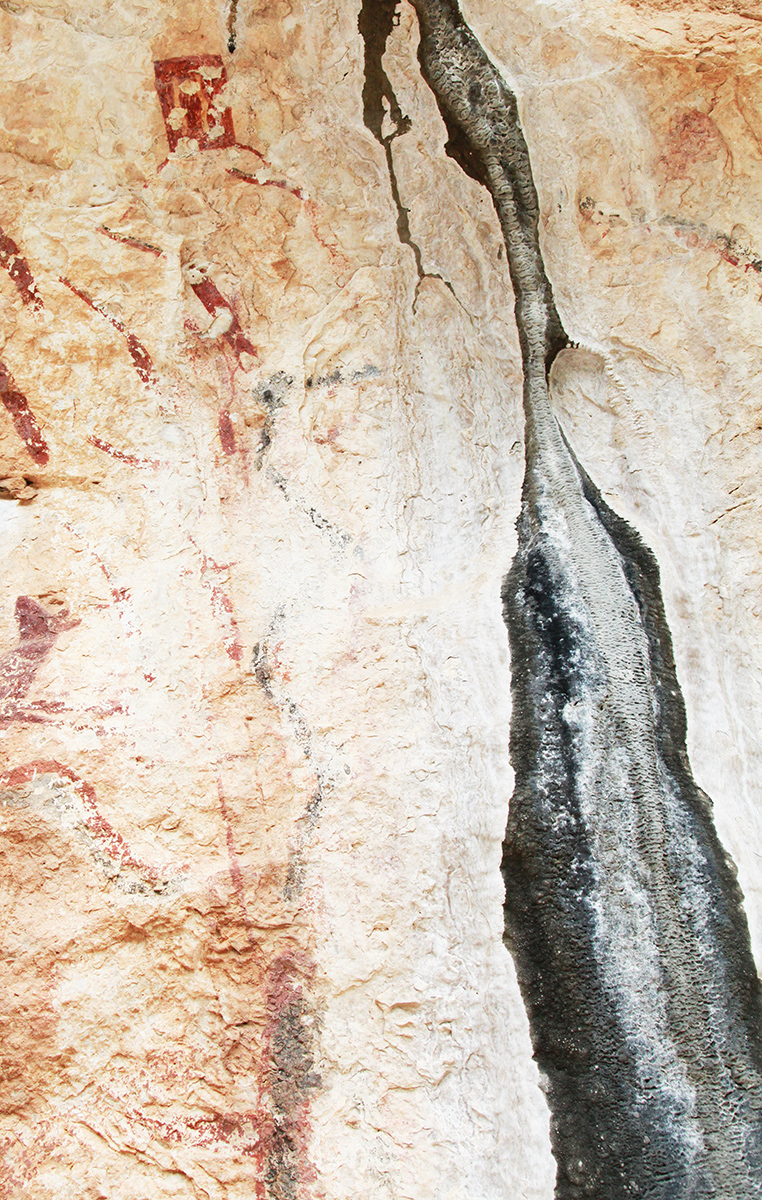
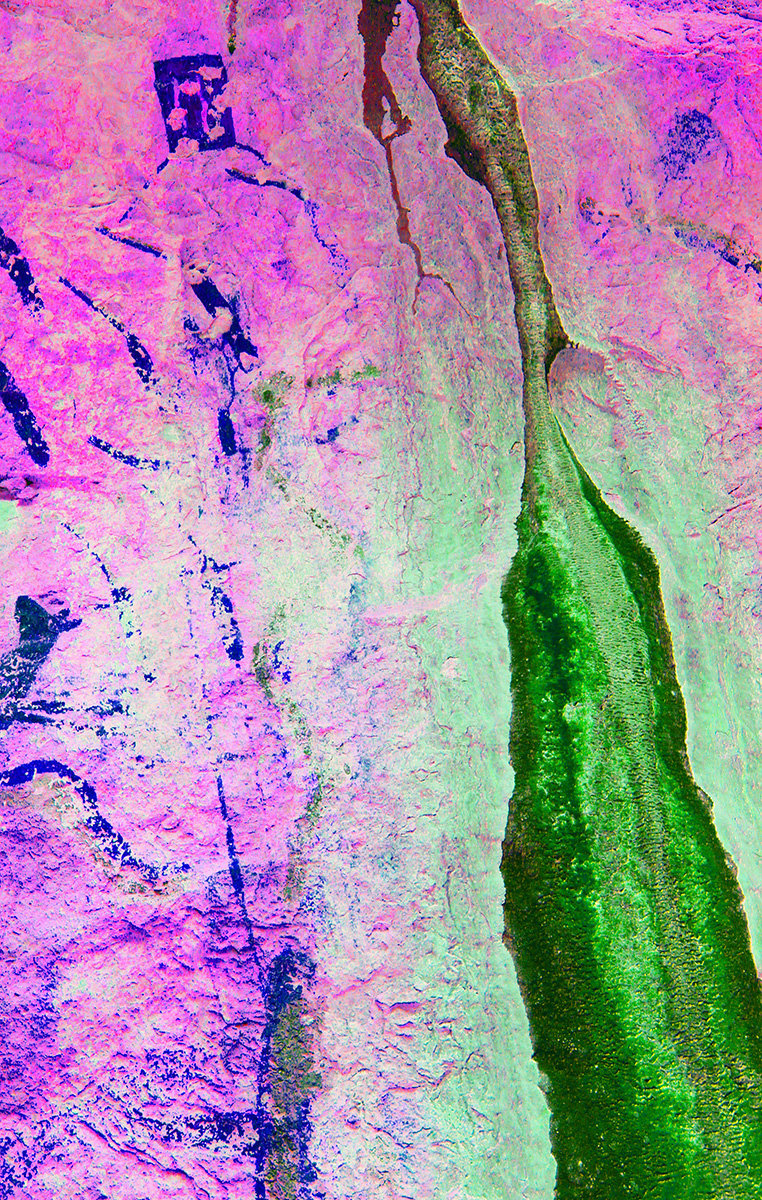
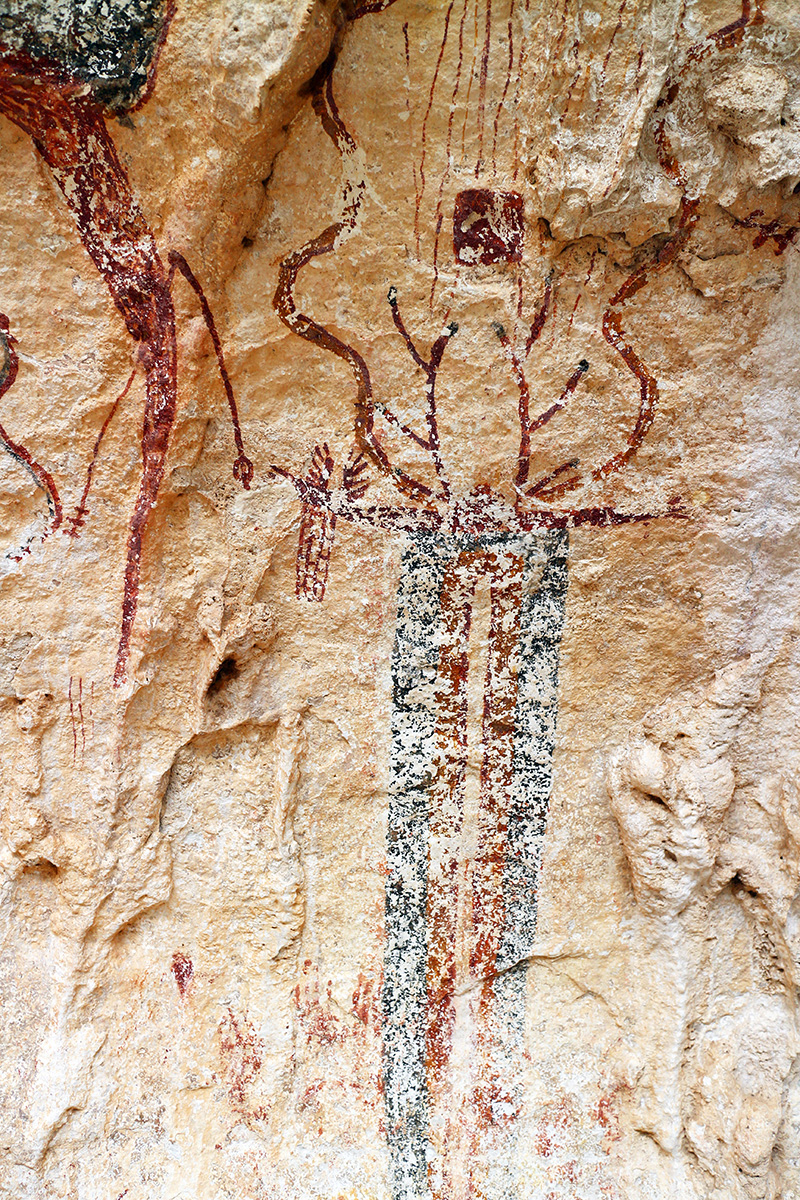
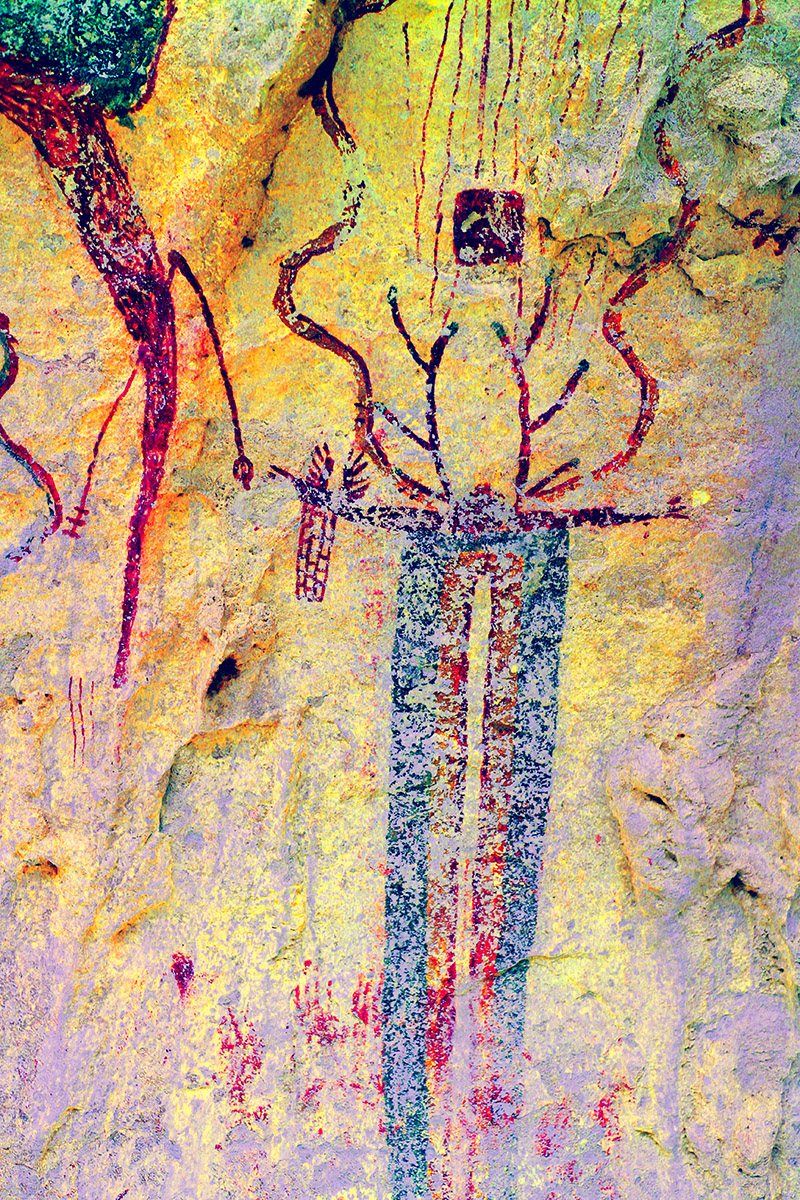
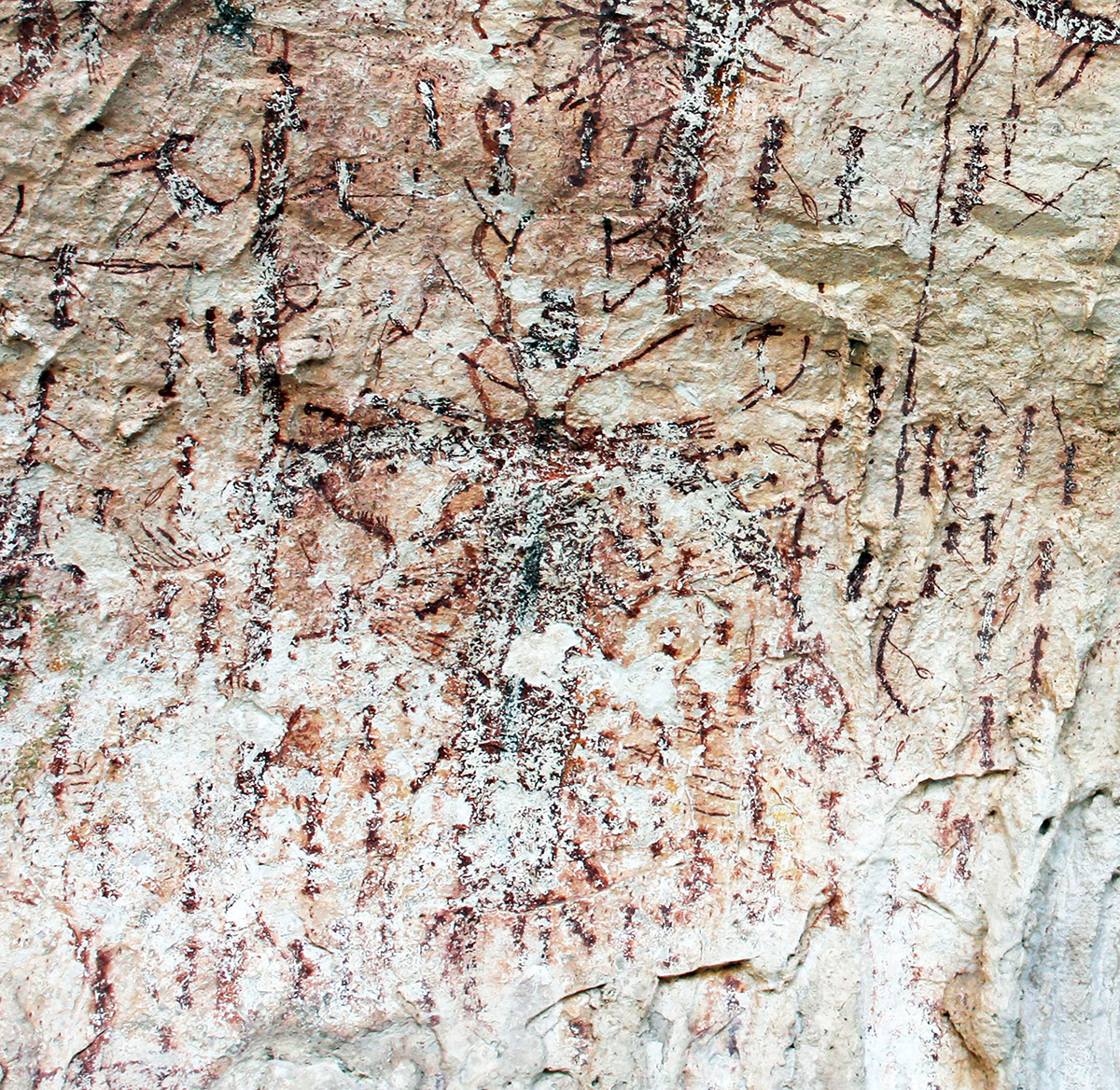
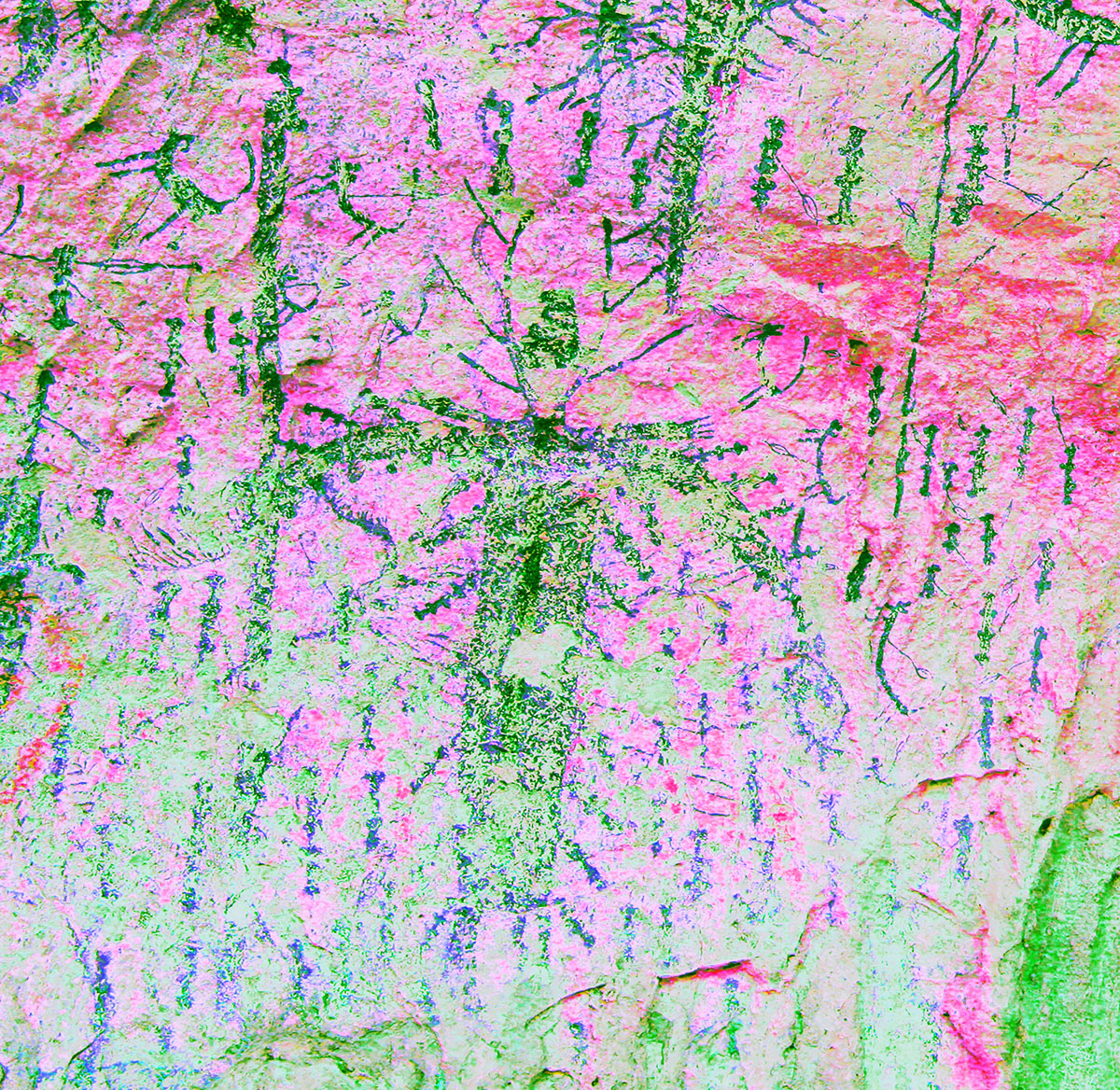
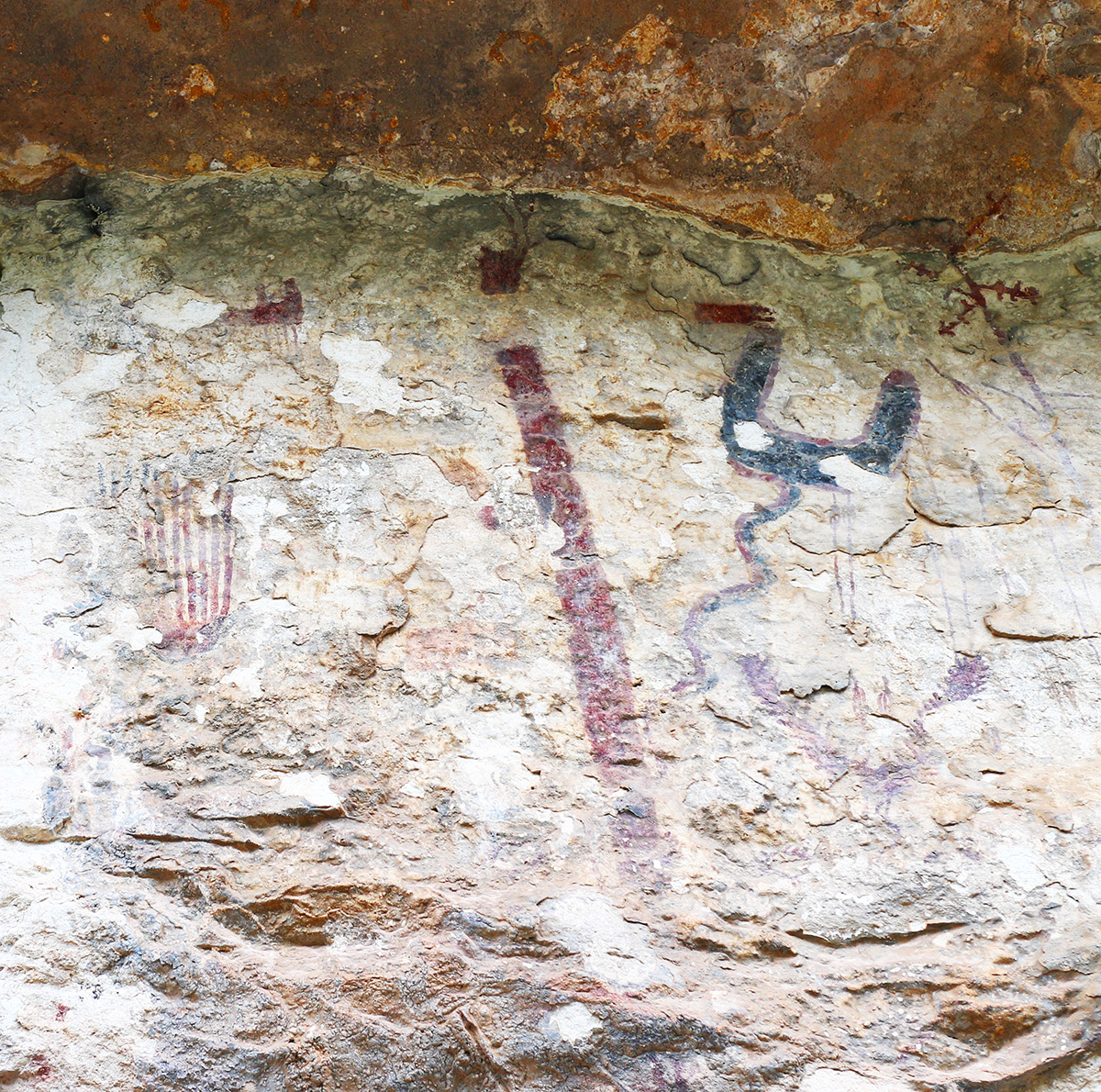
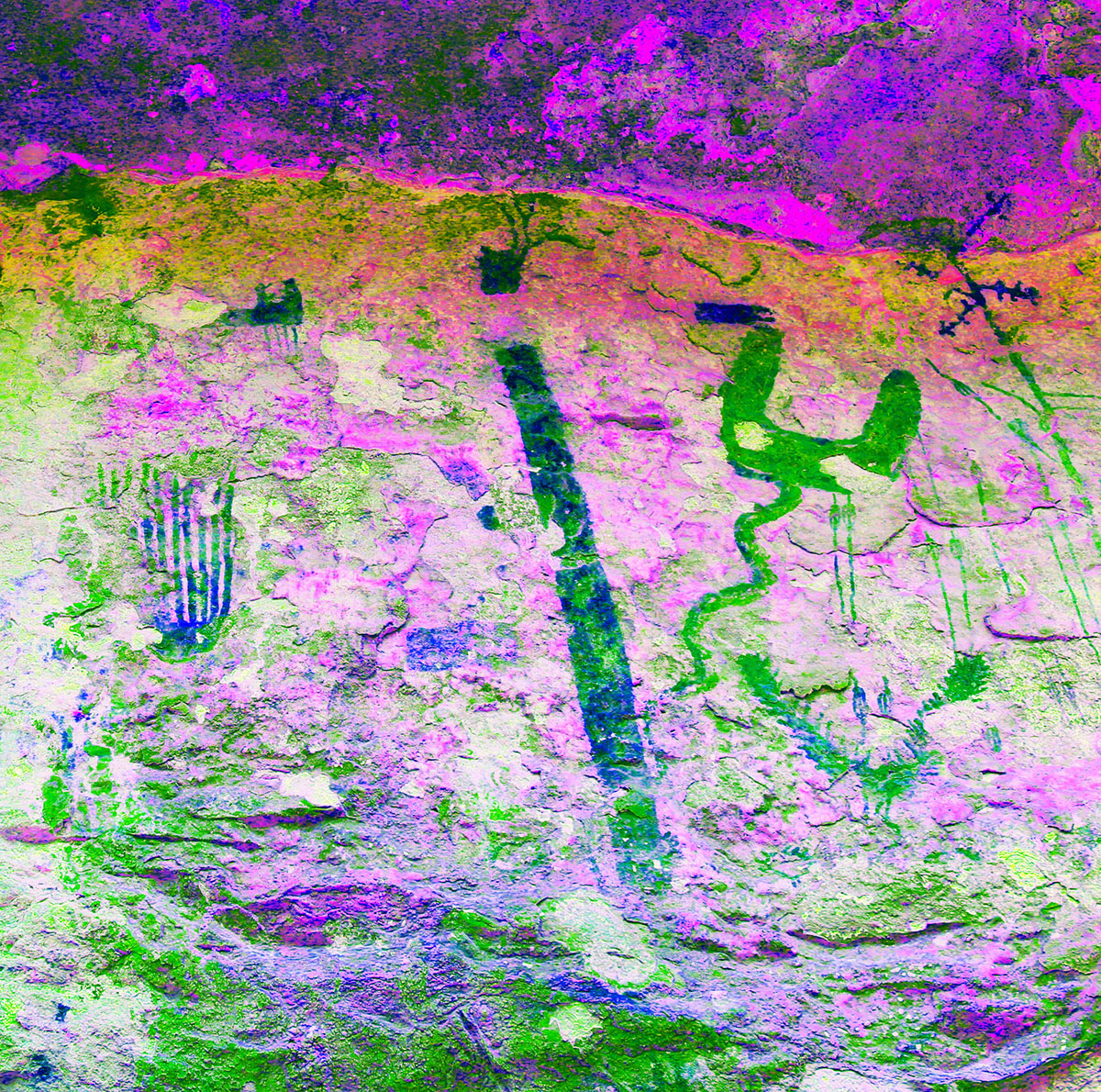
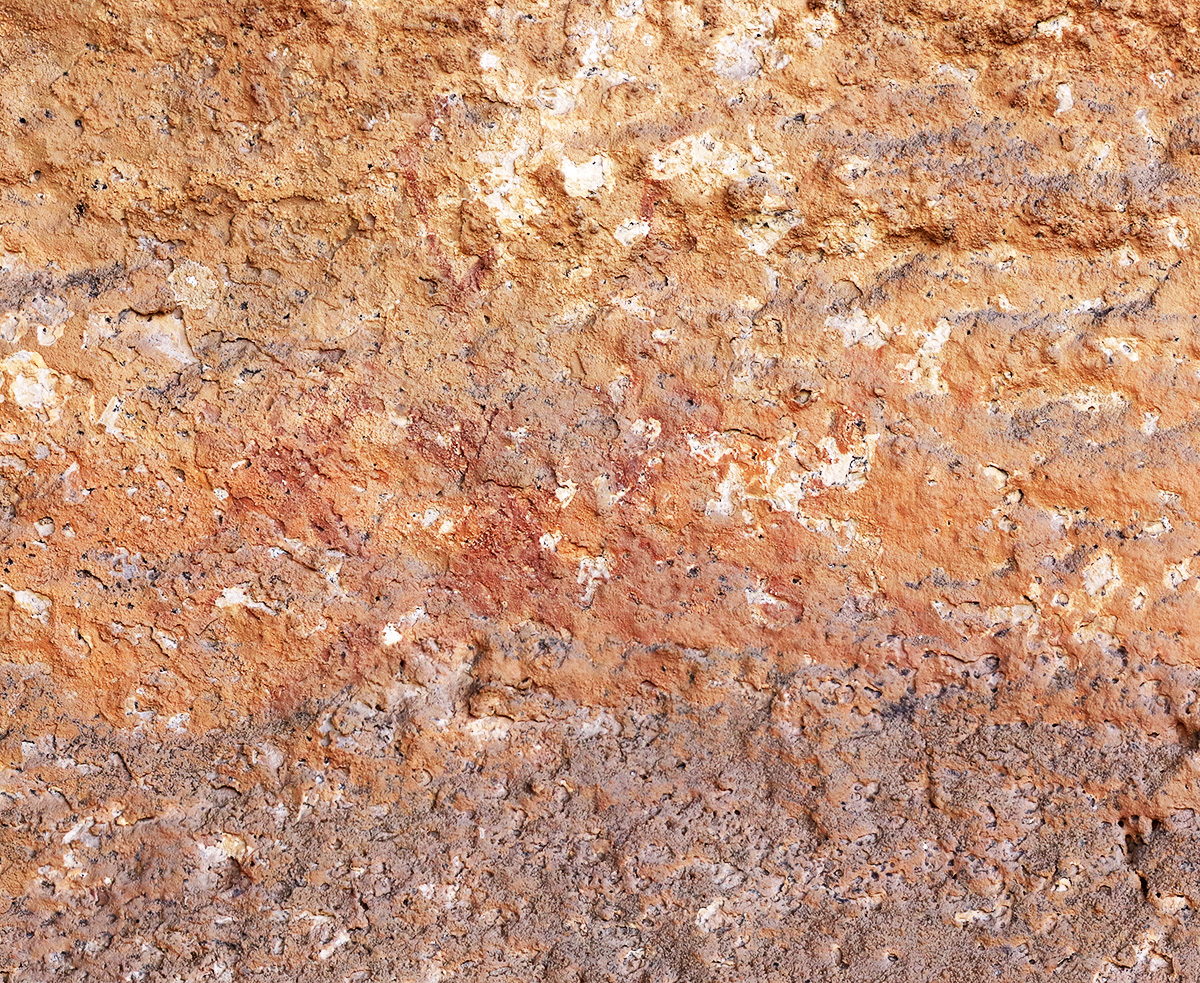
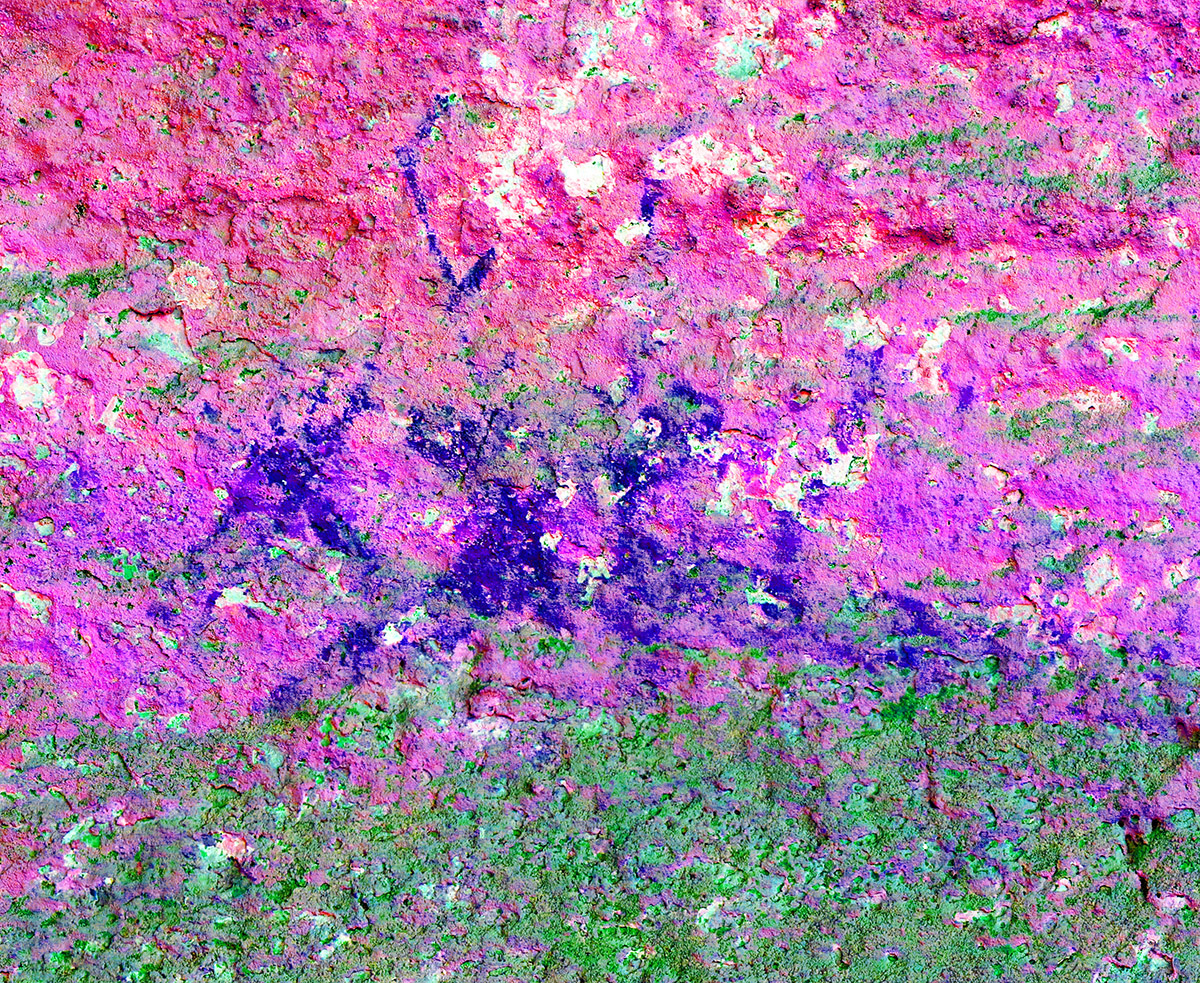

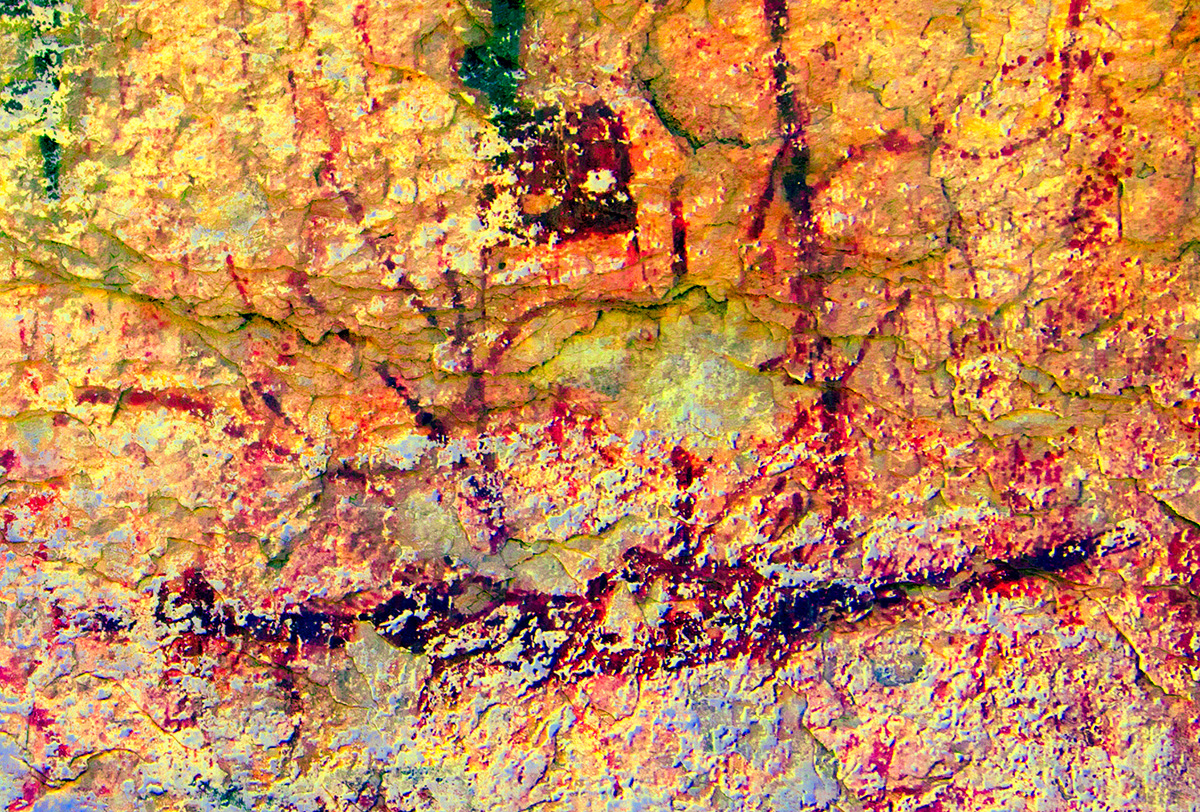
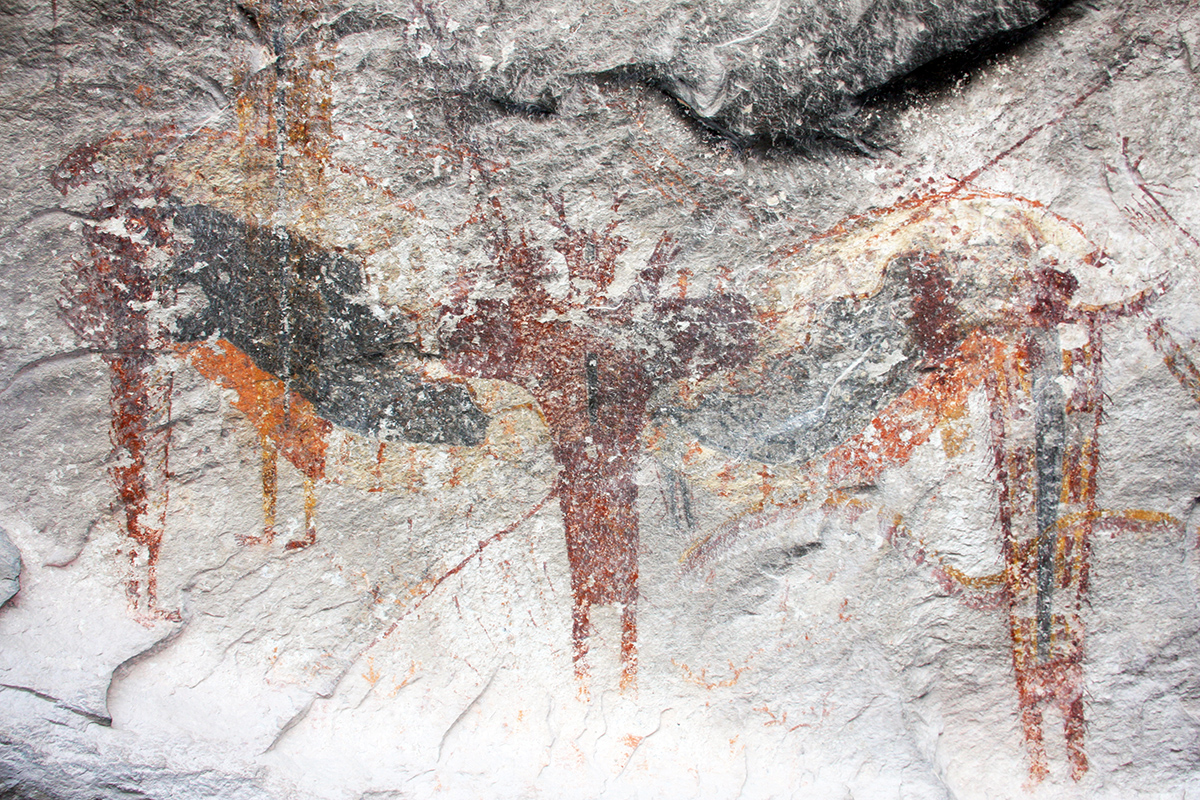
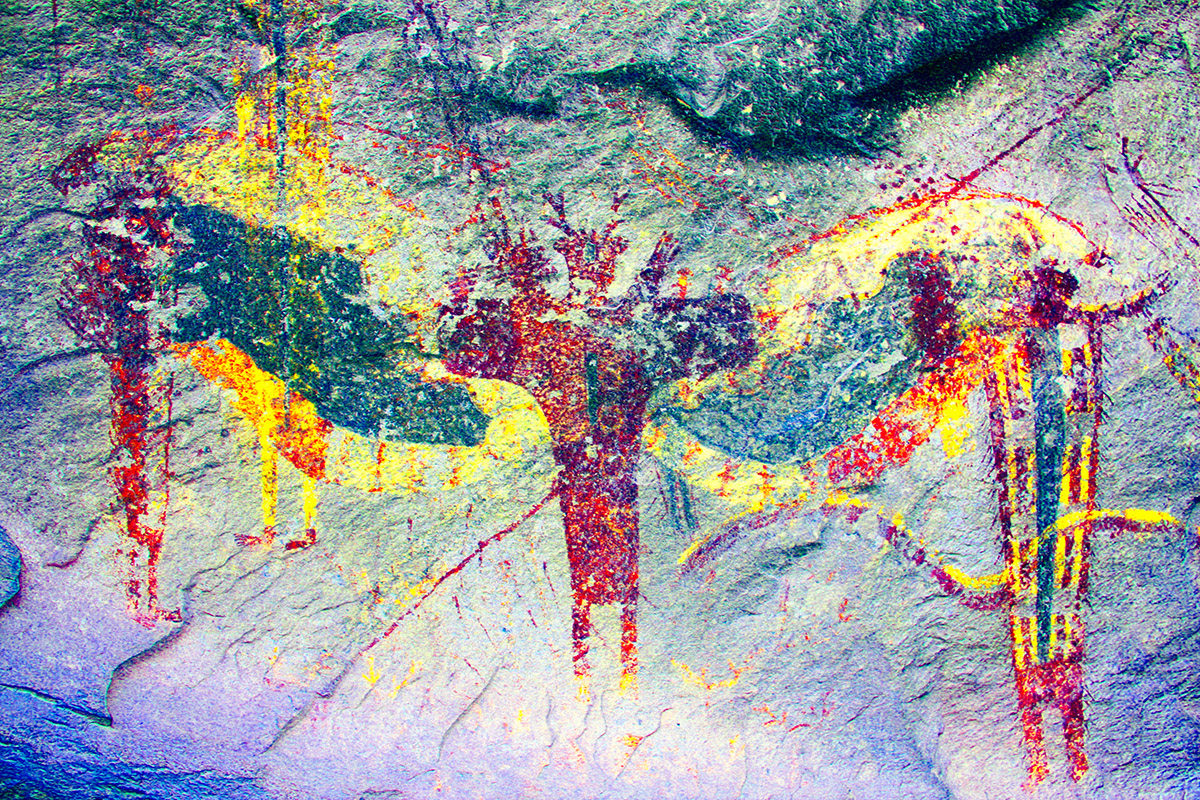
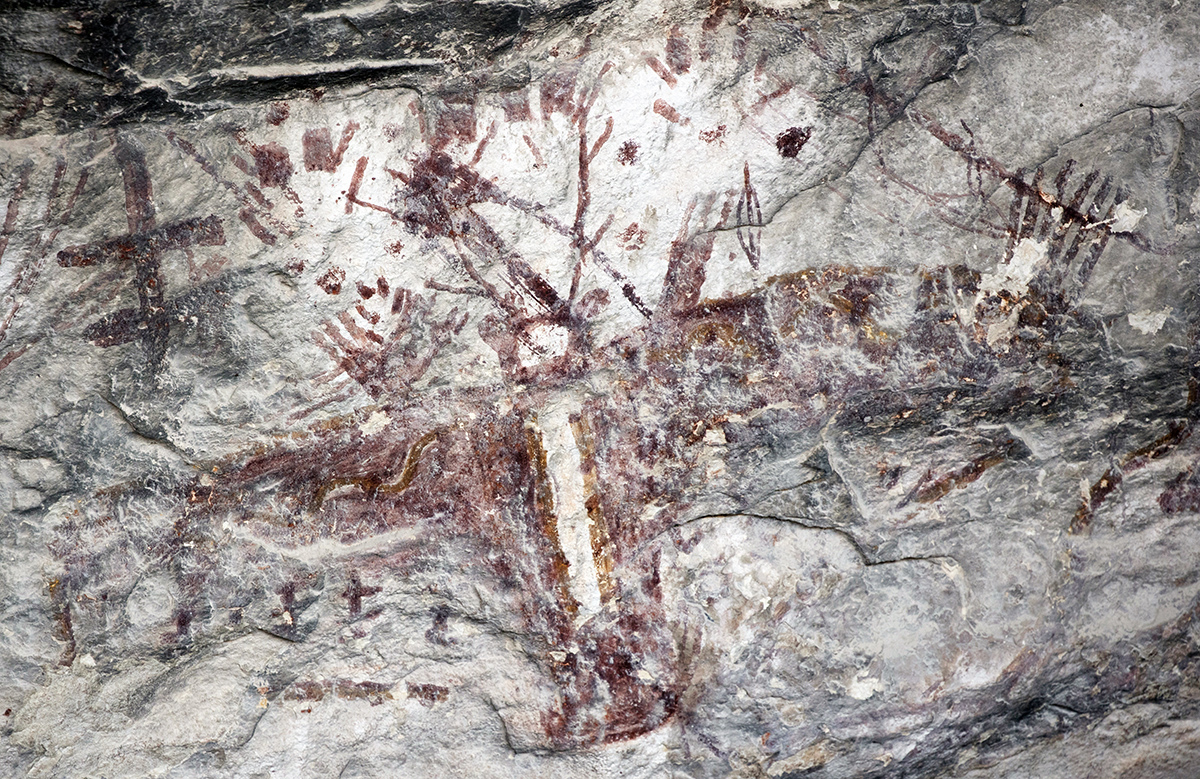
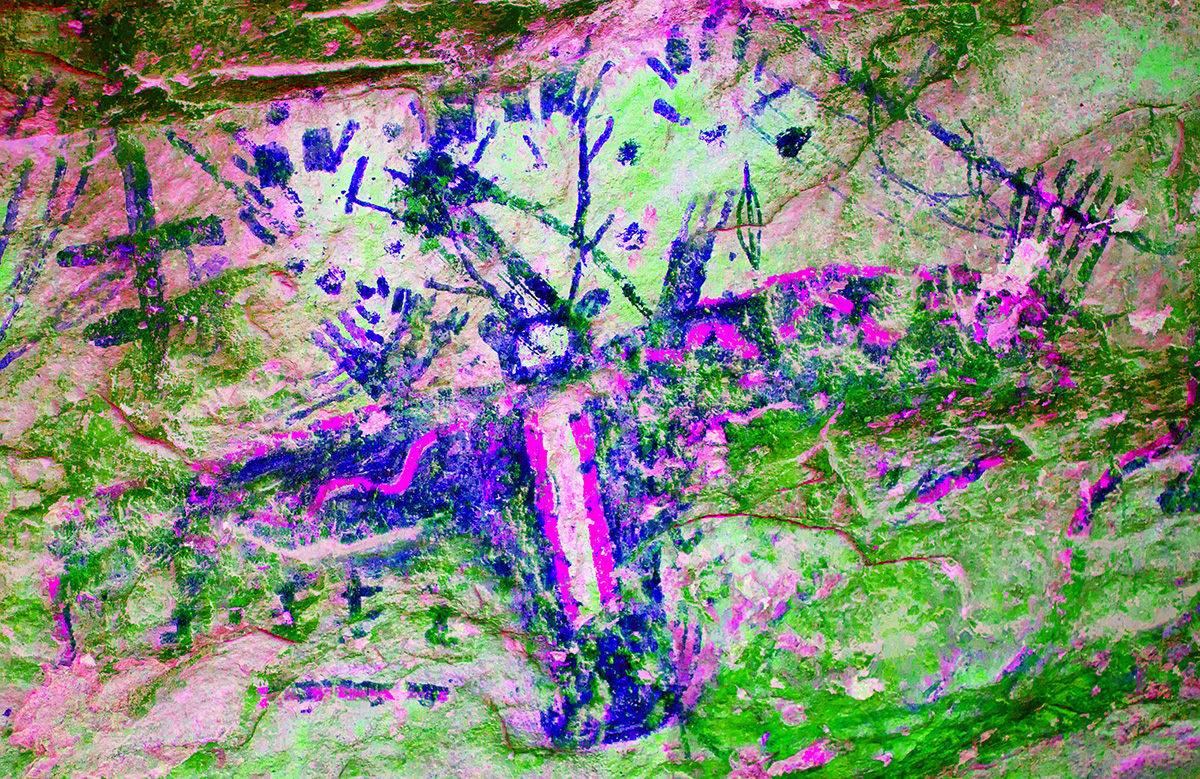
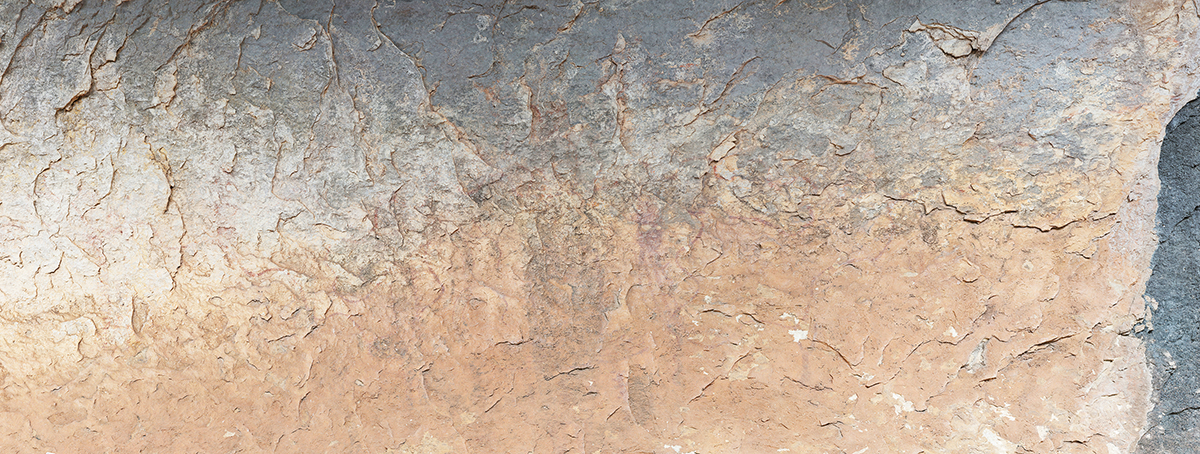
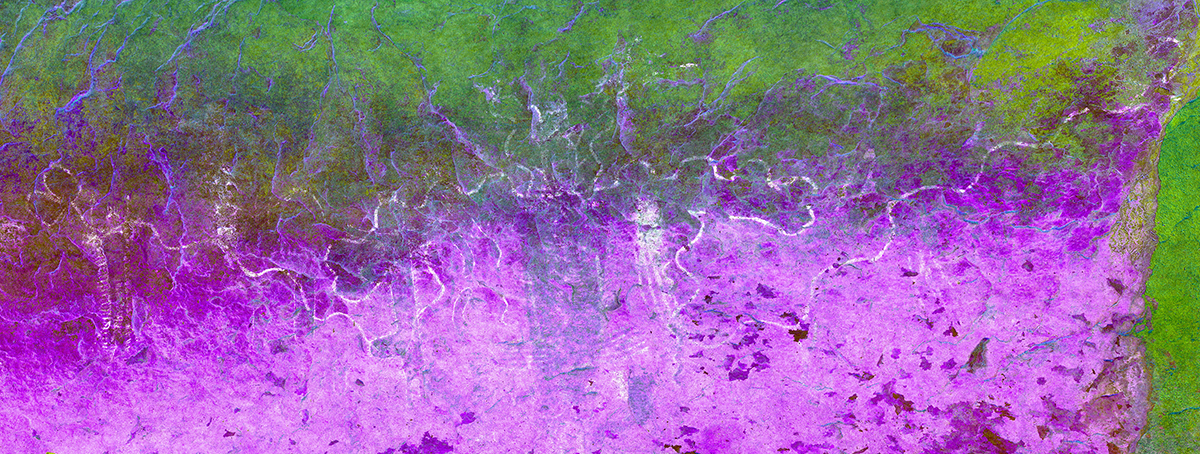
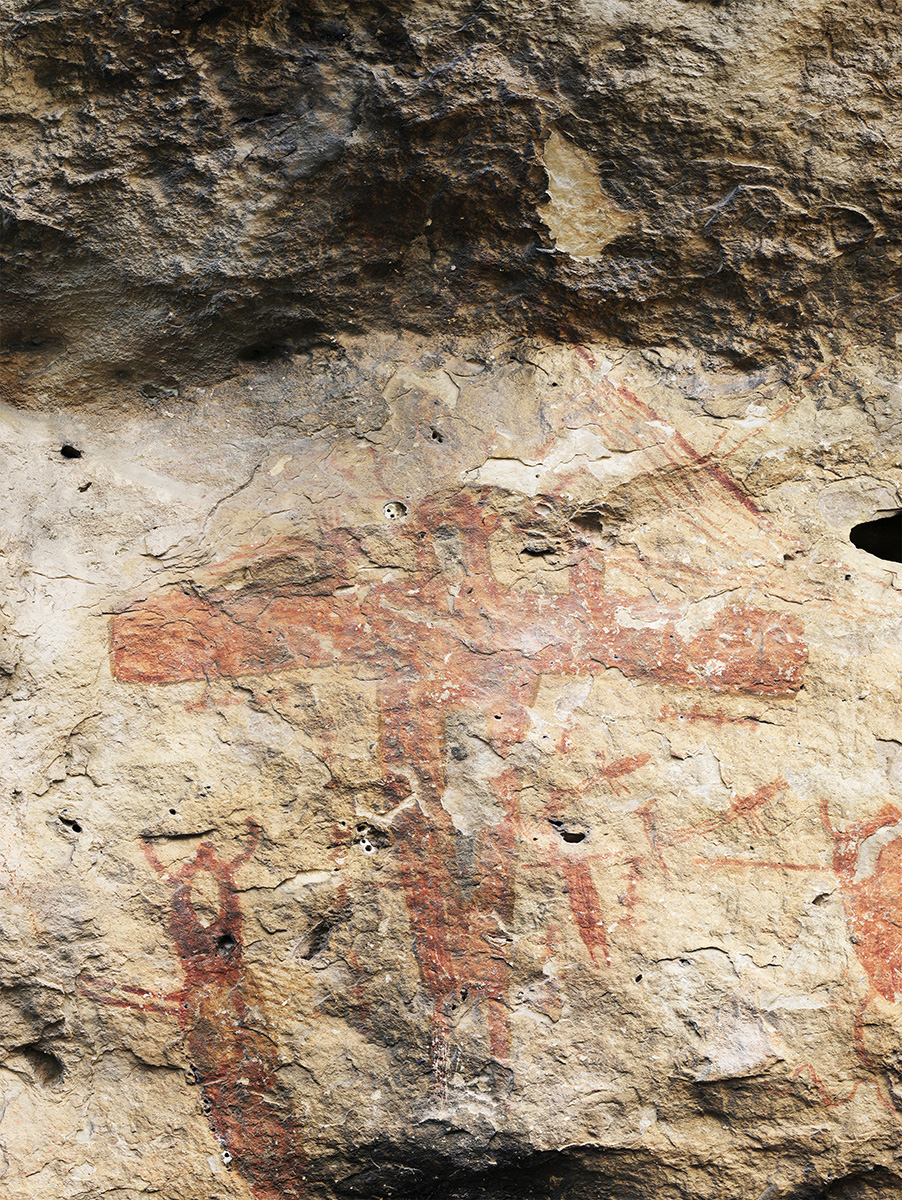

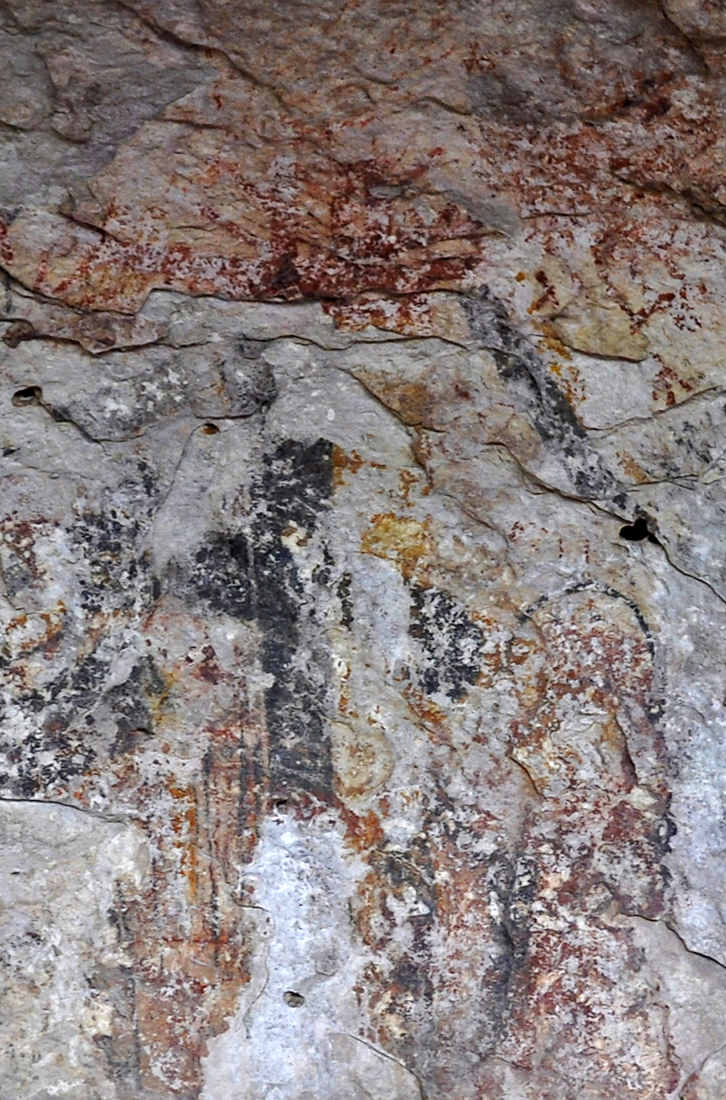
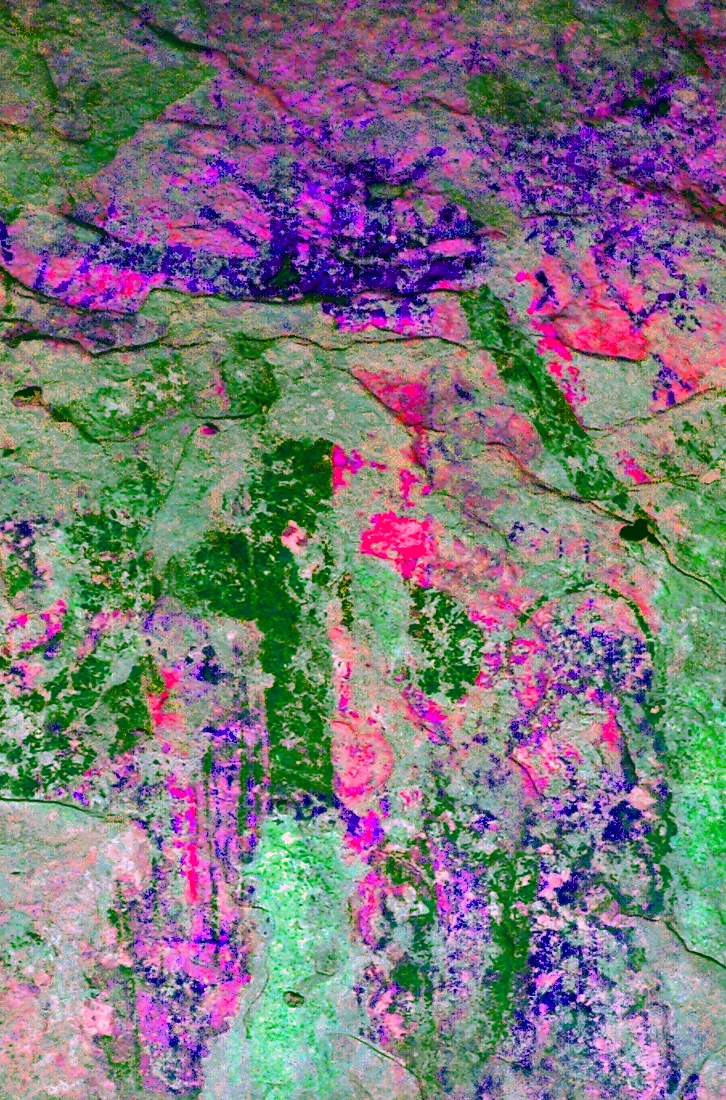

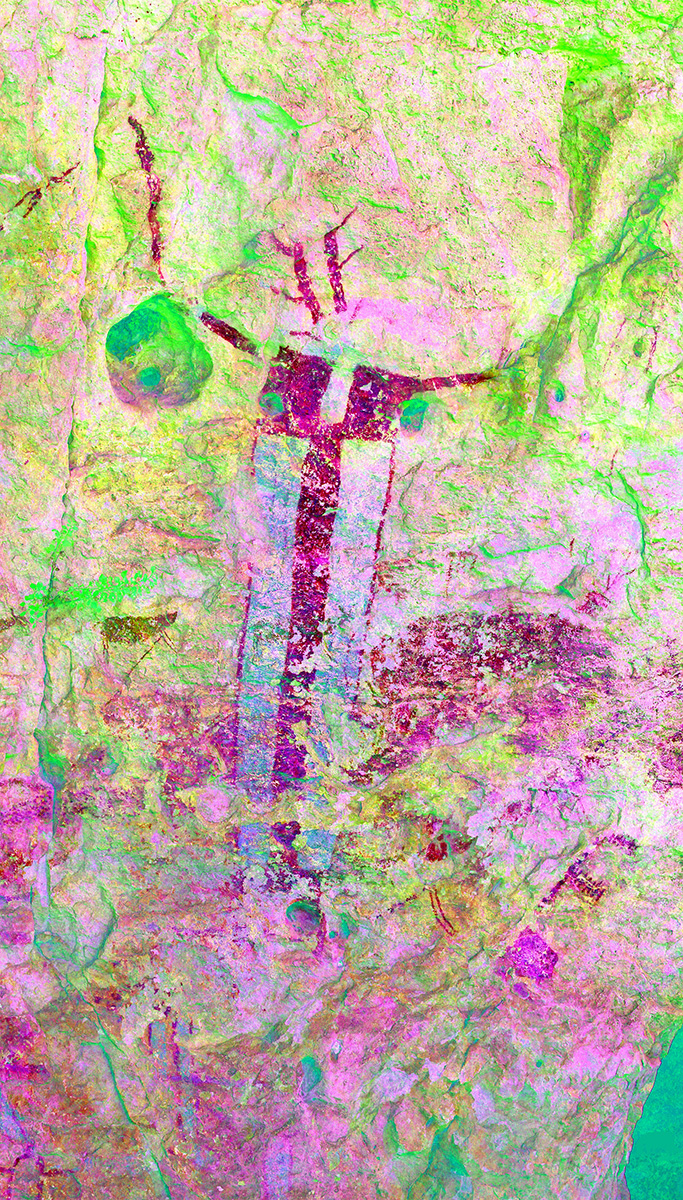
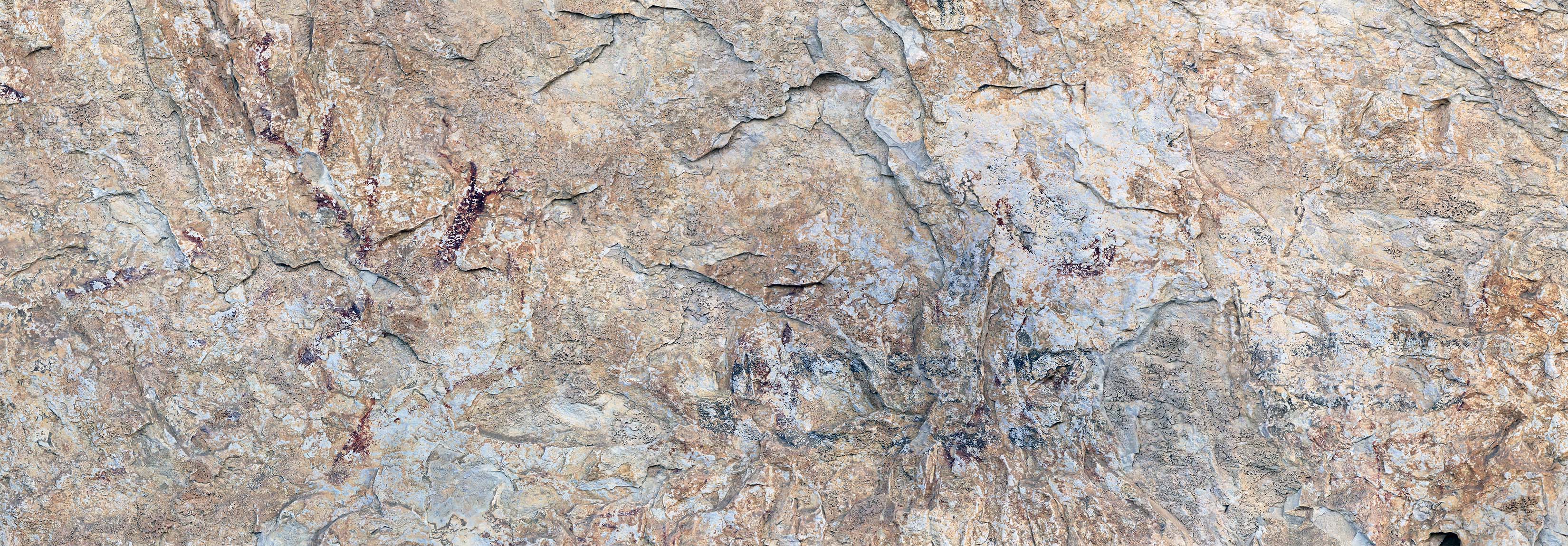

Are the dots possibly marking constellations? They’ve been painted and then “filled in” with the deity that matches the “deer” constellation, e.g. The common shape of significant figures, including deer, is rectangular. Dr. Boyd has observed that the white shamanic figure is headless. The shaman also rectangular. Looking at figures that look like long black creatures with long antennae, I believe they are just like the white shaman, headless figures with arms but their arms are reaching up and worshipping an important figure. Why is it that some rectangular bodies have heads, like the deer (also highly revered by the Huichol) and others don’t- the black figures and white shaman?
Hello! Dr. Boyd put forth several different interpretations for the dots in her most recent White Shaman book, including that the dots represent the souls of the ancestors (which are also stars). So, in that regard it is possible that the dots could represent constellations. Regarding head/head shape and the relation to body shape, there is a huge variety within Pecos River Style rock art of how artists depicted these things. Generally Pecos River Style anthropomorphs have rectangular bodies, and some sort of head, but we’re not sure the meaning behind when they painted (or did not paint) heads on figures.
Are you familiar with deer (incl. White-Tailed deer) behavior, specifically bucks, standing on their hind legs in certain situations during the Bachelor Period (pre-rut)? I have numerous photographs of the activity that, to this day, instills within me a sense of awe, and I am often left wondering how prehistoric man must have viewed such activity and it likely was perceived as magical or supernaturally-induced. Have thought of authoring a short paper that ponders the possibility, along with supportive photos [of White-Tailed deer] depicting the act, along with a few photos of antlered anthropomorphs.